Beauly to Blackhillock to New Deer to Peterhead 400kV OHL
- Type:
- Transmission reinforcement
- Location:
- Aberdeenshire, Highland, Moray
- Rating:
- 400kV
A new overhead power line transporting clean, renewable power and supporting the country's drive to a secure and net zero energy future.
Overview
Status: Early Development
Stage 2 of 5

-
Stage 1: Project Assessment: (Completed)
During the Project Assessment stage, we’re committed to evaluating potential project strategies. At this stage, we provide information about the proposed project plans on our website for stakeholders to review and provide feedback on, as well as holding in-person events within the local community demonstrating our collaborative approach to the project's development.
-
Stage 2: Early Development: (In progress)
During Early Development, we concentrate on refining the project details, based on our initial assessment of key environmental, technical, and economic factors to identify the best performing approach. We would like to gain further input from communities through accessible in-person and in some cases online consultations, which are crucial in refining our plans and strategies before advancing to the application stage.
-
Stage 3: Project Refinement:
The Project Refinement stage is where we finalise project plans and submit the required planning applications to the relevant planning authorities. Communities and other key stakeholders can provide feedback directly to the appropriate body such as their local council and constituent representatives.
-
Stage 4: Construction Phase:
Within the construction phase we mobilise our workforce, contractors, and necessary equipment to begin construction. We maintain open channels of communication, allowing communities and stakeholders to submit feedback on the construction activities to our dedicated Community Liaison Managers, ensuring ongoing engagement to any thoughts or concerns while we carry out work in the area.
-
Stage 5: Operational Phase:
At this final stage, the project successfully moves into the operational phase, with the surrounding environment restored to its original state or better. Our Community Liaison Mangers continue to be available to address any questions or concerns, ensuring a lasting positive impact and strong community relations even after the construction activities conclude.
Announcement of new public engagement events for Coachford Overhead Line design changes
In May, SSEN Transmission confirmed the removal of the proposed Coachford Substation from the Beauly-Peterhead 400kV overhead line (OHL) project scope which resulted in design changes for the overhead line in the Keith area (Alignment Sections 19 & 20). Following this announcement, we will be hosting two consultation events in Keith and Cairnie to share the amended design and proposed alignment for the OHL within this area, including details on how this was developed.
Please see below the details for our upcoming consultation events:
• Tuesday 24 June, 3–7pm - Cairnie Memorial Hall, Cairnie, AB54 4TQ
• Thursday 26 June, 3–7pm - Longmore Community Hall, Banff Road, Keith, AB55 5ET
Interested parties can attend these drop-in events to discuss the design changes and share final comments ahead of the consent application later in 2025. Feedback can be provided via forms available at the events, the online form on our project webpage through the link above or via email to bbnp@sse.com.
These events will conclude our project engagement for the consent application that we now aim to submit for the Proposed Development to the Energy Consents Unit of the Scottish Government in Early Autumn 2025. The application will be submitted in line with the requirements of section 37 of the Electricity Act 1989.
Further documents relating to our most recent and previous engagement events can be found in the documents tab of this project page.
This video provides a 3D visualization of the proposed changes to the alignment in this specific area.
3D Model
We have a 3D model which allows users to view the overhead line from view points across the project route.
About the Project
In order to support the continued growth in onshore and offshore renewables across the north of Scotland, supporting the country's drive towards Net Zero, investment in network infrastructure is needed to connect this renewable power and transport it from source to areas of demand across the country.
Extensive studies have confirmed the need for a new 400kV connection between Beauly and Peterhead, connecting into a substation site at New Deer. The project includes the following elements:
- A new 400kV connection between Beauly and New Deer
- A new 400kV connection between New Deer and Peterhead
- New 400kV substations and associated infrastructure at Beauly, New Deer and Peterhead
- Removal of the existing 132kV overhead line from Beauly to Knocknagael following establishment of the new 400kV connection
Find Out More About New Beauly Area 400kV Substation
Pathway to 2030
The Pathway to 2030, published by National Energy System Operator NESO, the electricity system operator for Great Britain, sets the blueprint for the electricity transmission network infrastructure required to enable the forecasted growth in renewable electricity across Great Britain.
The projects identified within the Pathway to 2030 are critical to delivering the UK and Scottish Government’s offshore wind targets. To deliver these targets, we are investing over £20bn to upgrade the network infrastructure across the north of Scotland as the region plays a leading role in the clean energy transition.
As part of this investment, there is a requirement for a new 400kV connection between Beauly and Peterhead.
Explore Pathway to 2030 Projects
This video outlines how the project contributes to our role in delivering Net Zero.
How we’re embracing artificial intelligence (AI)
We intend to use AI to assist our experienced teams in the analysis of your feedback, so we can categorise key points raised more quickly. You can learn more about how we’re utilising AI on this dedicated web page.
Project Updates
Featured updates
Featured updates for this project
Project updates
-
Announcement of new public engagement events for Coachford Overhead Line design changes
In May, SSEN Transmission confirmed the removal of the proposed Coachford Substation from the Beauly-Peterhead 400kV overhead line (OHL) project scope which resulted in design changes for the overhead line in the Keith area (Alignment Sections 19 & 20). Following this announcement, we will be hosting two consultation events in Keith and Cairnie to share the amended design and proposed alignment for the OHL within this area, including details on how this was developed.
Please see below the details for our upcoming consultation events:
• Tuesday 24 June, 3–7pm - Cairnie Memorial Hall, Cairnie, AB54 4TQ
• Thursday 26 June, 3–7pm - Longmore Community Hall, Banff Road, Keith, AB55 5ET
Interested parties can attend these drop-in events to discuss the design changes and share final comments ahead of the consent application later in 2025. Feedback can be provided via forms available at the events, the online form on our project webpage through the link above or via email to bbnp@sse.com.
These events will conclude our project engagement for the consent application that we now aim to submit for the Proposed Development to the Energy Consents Unit of the Scottish Government in Early Autumn 2025. The application will be submitted in line with the requirements of section 37 of the Electricity Act 1989.
Further documents relating to our most recent and previous engagement events can be found in the documents tab of this project page.This video provides a 3D visualization of the proposed changes to the alignment in this specific area.
-
Removal of Coachford from Beauly-Peterhead project scope
Following detailed ground investigation works which revealed technical challenges at the site, we will no longer be proceeding with the construction of the proposed substation at Coachford as part of the Beauly to Peterhead 400kV overhead line project. The results of our ground investigation work created an opportunity to reassess how, when and where the objectives of Coachford could be delivered, taking future development opportunities in the area into consideration.
Coachford was identified as one of four substations proposed along the line’s route, to support the transmission of renewable electricity as part of the project. Following the decision to remove the substation from the Beauly to Peterhead project, we will now start exploring alternative options to deliver the initial needs of Coachford - informed by community feedback and development insights gathered so far – at a new site.What does this mean for the Beauly to Peterhead 400kV?
The Beauly to Peterhead 400kV overhead line project will now comprise three new substations rather than four, alongside the overhead line infrastructure, and still fully deliver the power transmission and grid connectivity requirements identified under our Pathway to 2030 projects. This change will not impact the overall functionality or capacity of the project, which is scheduled for completion by 2030.
You can read more information in our press release here.
We will shortly begin engaging with our stakeholders to explain these changes. The project team will be reaching out to local communities, landowners, and developers in the area to provide detailed updates regarding the revised scope of the project and what it means for them. This will include localised public engagement events relating to the changes in this section in Keith and Cairnie, the details of which will be shared soon.
-
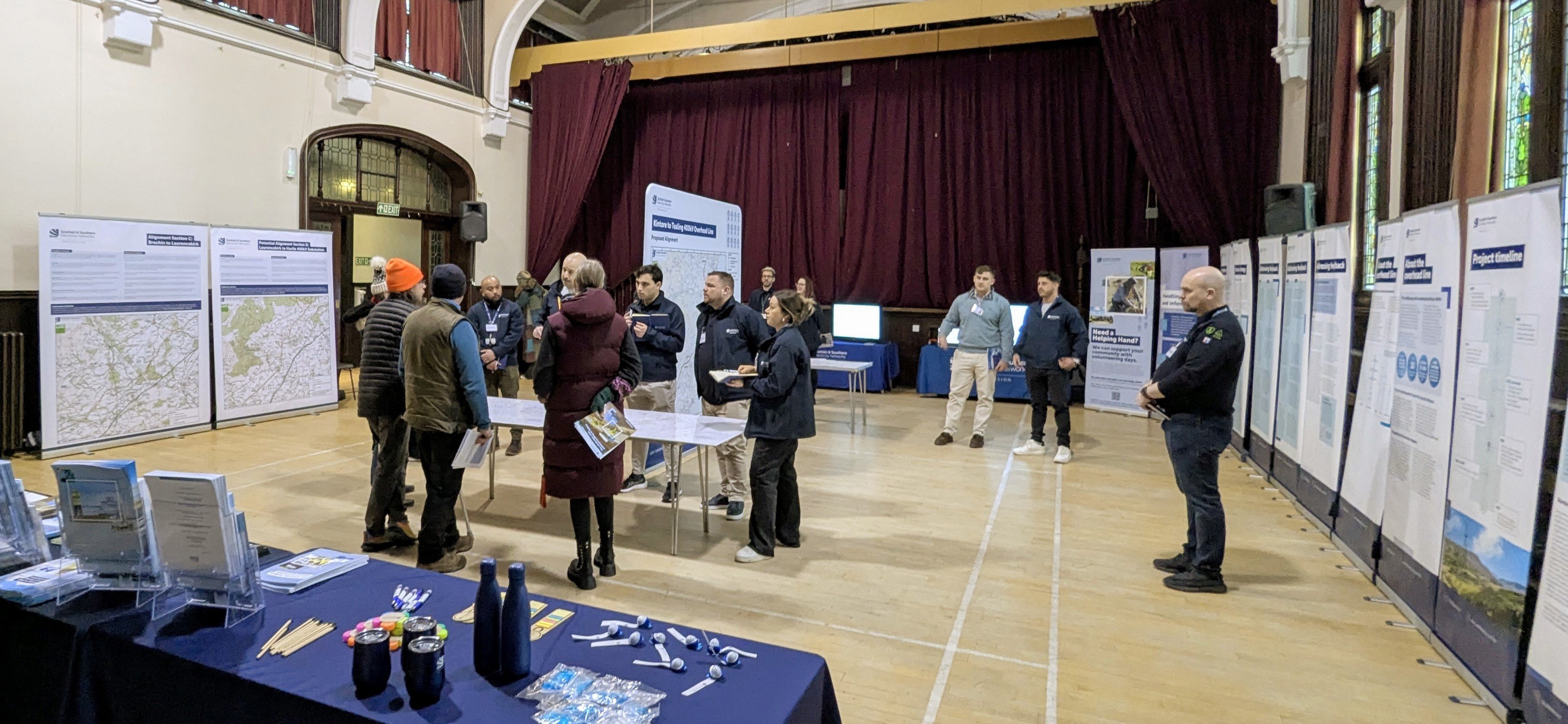
SSEN Transmission thanks you for your engagement at our recent series of public consultation events
We would like to thank all local community members and stakeholders who took the time to attend our recent public consultation events which took place between 17 February – 19 March 2025, with 16 in person events covering the Beauly-Blackhillock-New Deer-Peterhead 400kV overhead line project.
Our feedback period closed on Friday 21 March 2025 where we welcomed comments regarding our proposed alignment that was presented during the events. Although the formal feedback period has closed, we continue to welcome comments on how we can engage with you during the next phase of the project, you can provide this by getting in touch with us through either of the below methods;
Email: bbnp@sse.com
Post: SSEN Transmission, 10 Henderson Road, Inverness, IV1 1SN
Our consultation materials and fly-through 3D model videos remain available on our project webpage which you can access here. This allows you to view and access photosphere visualisations of the overhead line. You can also access our Story Map here which takes you through the project and provides interactive maps detailing the alignment and different considerations.
All of the materials that were on display at our events are available to download via the project ‘Documents’ section of this project website. Please let us know if you require information in an adapted format such as paper copy, large print or braille and we will work with you to accommodate your preferences. We are happy to accommodate all reasonable requests for adapted communications.
We plan to submit our section 37 application to the Energy Consents Unit (ECU) in late spring, at which time we will send out notification of the submission for you to view this on the ECU portal. Any comments made to us as the Applicant are not representations to Scottish Ministers as the decision makers. There will be opportunity to make formal representations to Scottish Ministers via the Energy Consents Unit following the submission of the section 37 application.
Now the engagement events for the proposed alignment have finished, we are currently working through responding to all enquiries as quickly as we can. If there is anything you would like us to follow up on, please get in touch. -
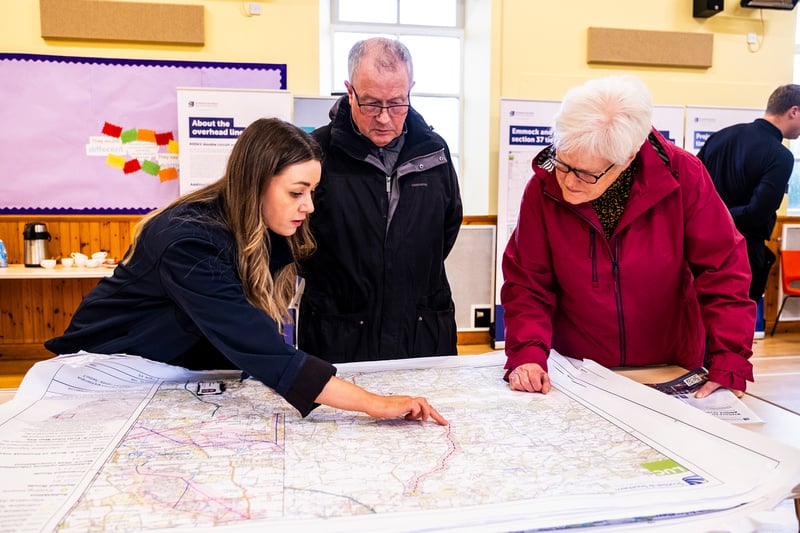
Alignment Report on Consultation Publication
SSEN Transmission has today published its final Report on Consultation for a proposed new 400kV overhead line running from Beauly via Blackhillock and New Deer then on to Peterhead. The project would comprise four new substations along its route, and new HVDC converter stations at either end.
The Report on Consultation (ROC) provides a summary of the feedback received in response to proposals for the overhead line, how this has been considered, and confirmation of the final proposed overhead line route alignment (Proposed Development) intended to be taken forward for planning consent. A copy of both the ROC and the Summary can be downloaded from the Documents tab, or please click the links below for direct access:
Hard copies will be available during our upcoming public consultation feedback events, and copies left accessible in local village halls where permitted.
-
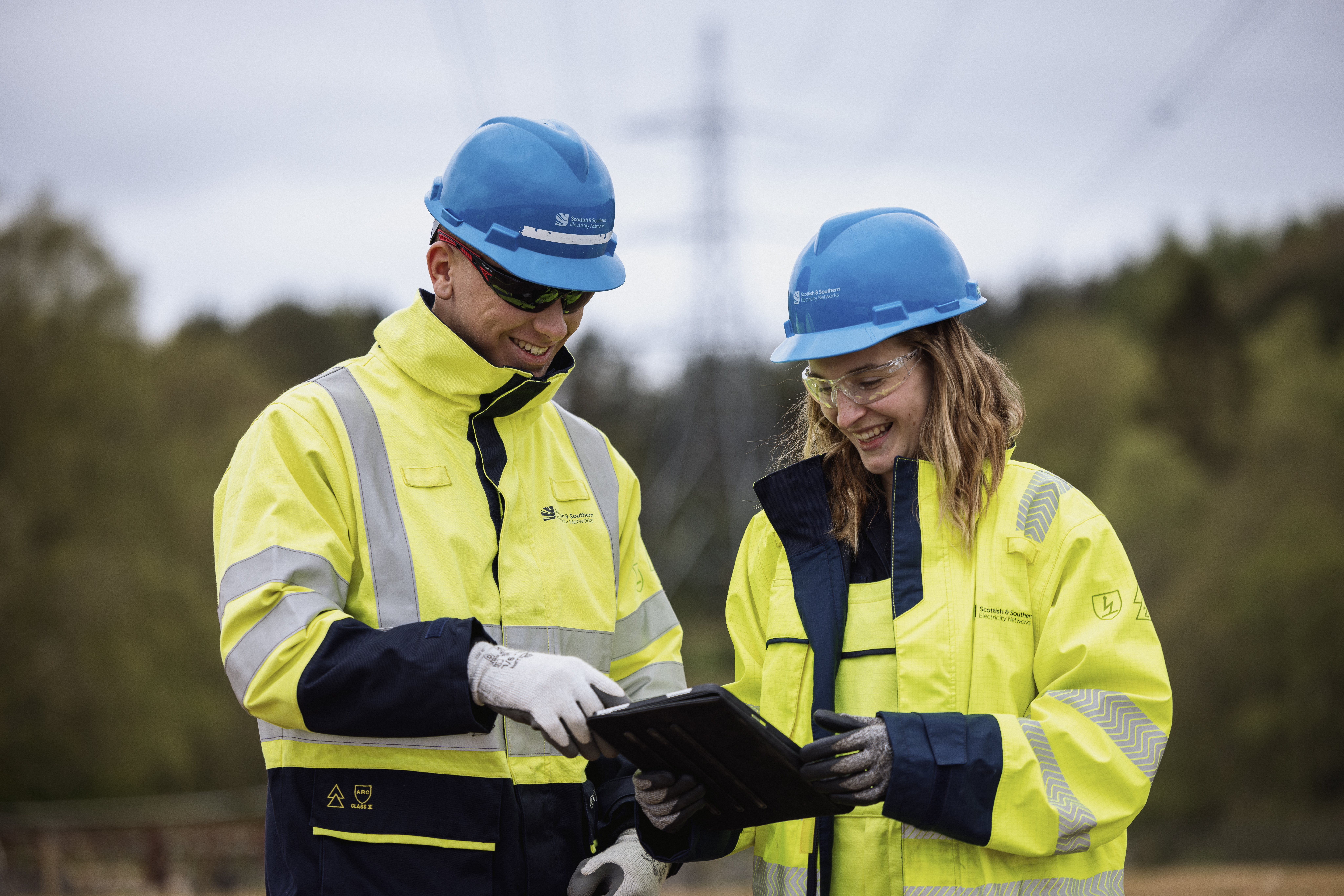
Project Update - December
Project Status Update – November 2024
Following public consultation events on the potential alignment for our overhead line in Spring 2024, we received detailed feedback from a wide range of stakeholders including, but not limited to, local community members, landowners, local heritage groups, statutory consultees and developers.
Once again, we would like to thank all those who took the time to attend our in-person consultation events, read through our consultation materials, participated in any follow-up meetings and provided valuable written feedback. Stakeholder input is integral to the development of these proposals and is much appreciated.
Previous timeline
Our intention, as communicated during the previous public consultation, was to publish our Report on Consultation earlier this year, carry out further Public Consultation on the final alignment in Autumn 2024 and then submit our Section 37 Planning Application in Winter 2024.
Updated timeline
The feedback provided, has led us to carry out further investigation in some areas and consider some changes to our proposals. These further investigations are now being concluded, and we intend to publish our Report on Consultation (ROC) in January 2025.
Following publication of the ROC, we plan to carry out further public engagement events early next year. During these engagements, we will report back on feedback received during our last consultation and confirm final design proposals for the overhead line. Following these engagement events, we aim to submit our Section 37 Planning Application in Spring 2025.
More information regarding these events will be shared once dates and locations have been confirmed.
-
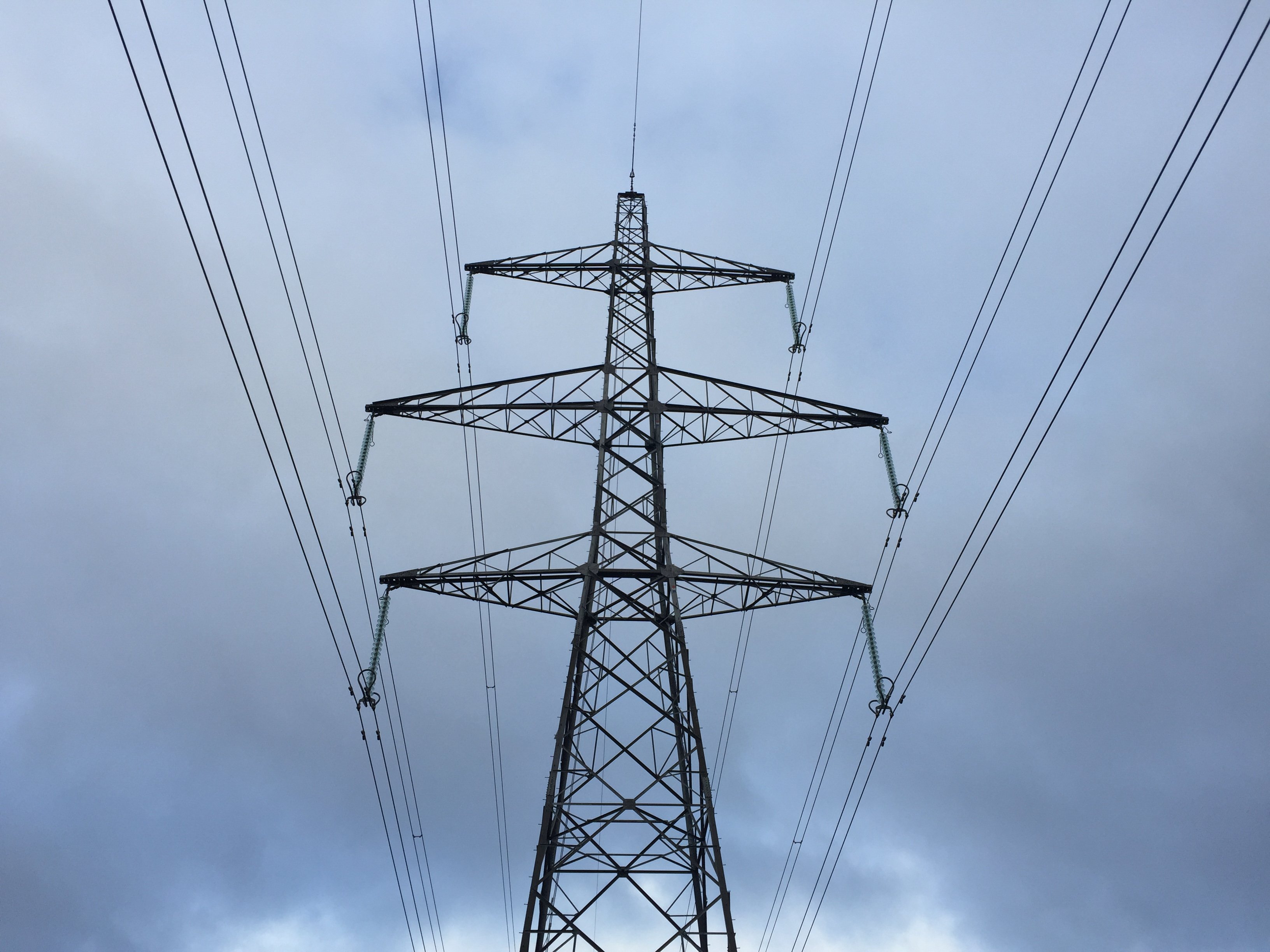
WATCH: View SSEN Transmission’s webinar called ‘Overground, underground, or subsea - how decisions are made on where electricity transmission lines go’
This week SSEN Transmission hosted a webinar to outline the differences behind technology options which will help transform the electricity grid in the north of Scotland in the journey to net zero.
The webinar, titled ‘Overground, underground, or subsea - how decisions are made on where electricity transmission lines go’, explore topics such as the comparison between the different transmission technologies and the complexities and challenges that come with transporting the huge amount of renewable energy being generated across the country to where it is needed.
Watch the full webinar within News and Views. Video length is approximately 1 hour 25 minutes. -
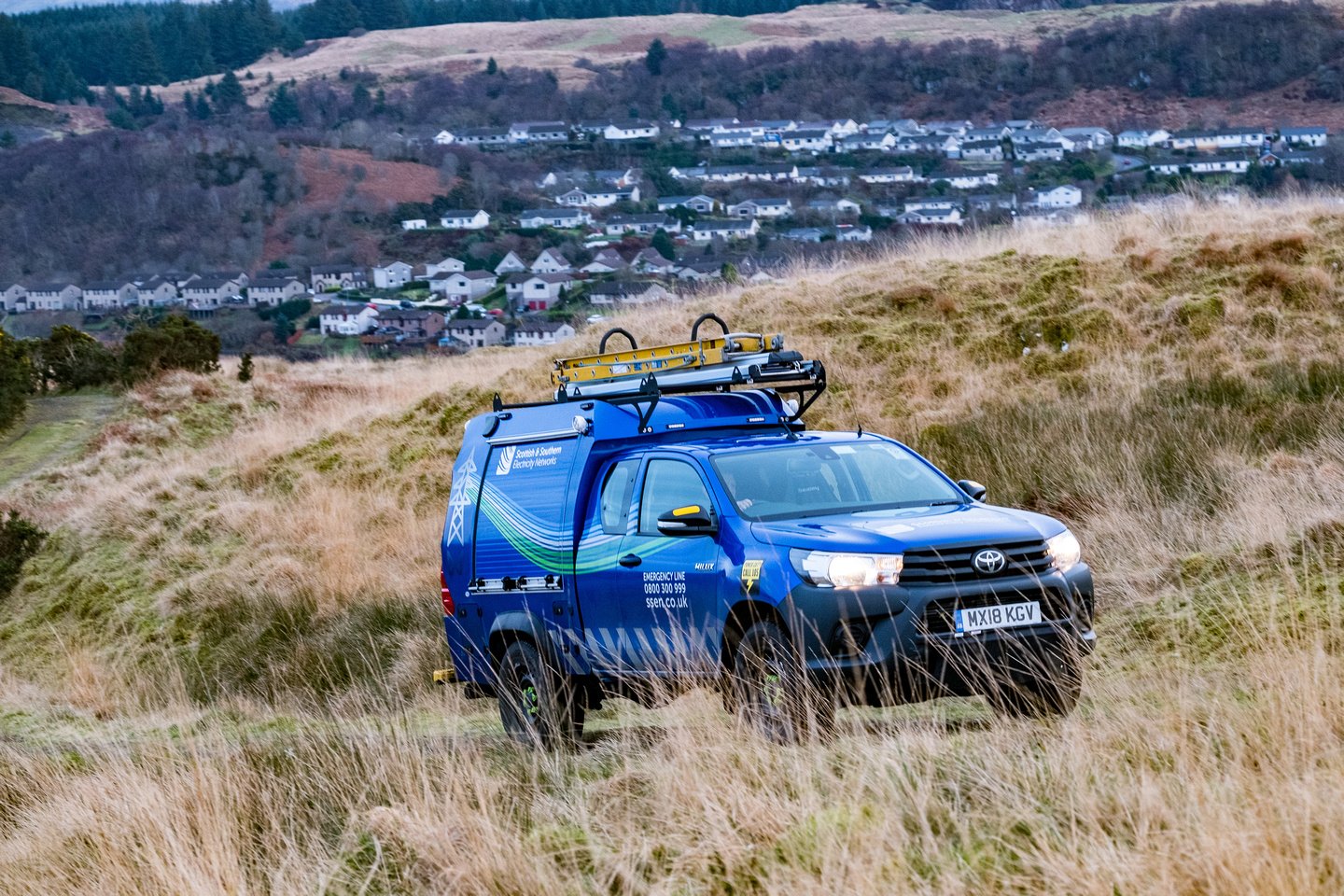
Ground Investigation Works
Ground Investigation Works Overview:
Over the coming months, our contractors will undertake ground investigation works, to help inform the next stage of development relating to the alignment of Beauly to Peterhead 400kV overhead line.
These ground investigations will involve digging hand excavated inspection pits, drilling boreholes, digging trial pits and testing the strength of the soil and underlying rock with specialist strength testing equipment.
This allows engineers to understand the engineering properties of the soil and rock beneath potential tower locations and their ability to support the structures.
This ground investigation work is a necessary step in any new developments, and the results will help determine the best designs for overhead line alignments.
Our project teams will oversee the contractors’ works accompanied by an Environmental Clerk of Works (ECoW) employed by the Principal Contractor, Balfour Beatty, with support from SSEN Transmission and their Environmental Impact Assessment (EIA) consultant WSP. Their primary responsibility will be to ensure the works do not impact on local wildlife, sensitive habitats, watercourses, private water supplies or archaeological assets.
The Ground Investigation Works will be carried out using Permitted Development rights available to SSEN Transmission under Class 40, (1), (c) of the Town and Country Planning (General Permitted Development) (Scotland) Order 1992 as amended, being necessary survey works.Other surveys
As well as ground investigations, there are other surveys taking place across the project route including; environemtal surveys, private water supply surveys, peat probing, badger monitoring surveys, wetland habitat surveys, diversion surveys for distribution network and alignment walk overs.
Scottish Woodlands will also be conduting forestry walk overs prior to felling works. This will follow engagement with affected landowners.Timeline/Programme
- The programme of works will commence in late July and continue until late 2025
- Ground Investigation works will be conducted continuously by multiple subcontractors across the route.
- Landowners have been contacted and access arrangements have been agreed for this work to progress.
- The schedule and sequencing of ground investigation work may change through findings and seasonal restrictions throughout the 12-18 month period.
- It is anticipated that there will be three working teams on site at any one time, each responsible for conducting their ground investigation works at a single tower.
- It is anticipated that the ground investigation work at each individual tower will take approximately 3 days (this may vary depending on findings during the ground investigation works).
Methodology
- Multiple sub-contractors will be carrying out the Ground Investigation works.
- The Ground Investigation machinery will be towed into position by a truck or pick-up before being assembled.
- Occasionally, if access to an area is very difficult, machinery will be transported in parts and assembled on site.
- Appropriate traffic management measures will be put in place (if deemed necessary) and agreed with the relevant authorities prior to doing so.
- A variety of tools will be raised and lowered, either by a cable and winch or a series of steel rods, to drill holes and dig pits to take samples or carry out tests.
- Short bursts of noise may occur as tests are performed or samples are taken using a hammering action.
- Machinery will typically be in place for a few days, depending on the depth of the sampling and the thickness of the ground. This method is used in both rural and urban locations.
- The work at each proposed tower location requires a minimum of two people, working in an area of around 40 square metres (m2).
- On completion, the ground will be reinstated as agreed with the landowner and/or relevant authorities.
- Boreholes may have instrumentation installed – for example, to monitor water levels.
- Where an installation remains in place, the only thing visible is a small cover, level with the ground, or a small steel barrel to provide protection.
What the works involve:
Ground Investigation work may be adapted dependent on findings and agreements with Landowners but will typically comprise of:
- Hand excavated inspection pits to a depth of 1.20m in advance of all boreholes.
- A single borehole at the centre of the proposed tower location (with some towers having 2 boreholes at diagonally opposite legs dependent on type of tower and/or known constrains in the area)
- Machine excavated trial pits at the diagonally opposite legs of proposed tower locations (with some towers having a trial pit at the centre of proposed tower location dependent on type of tower and/or known constrains)
- Trial pits at approximately 300-450m along new or upgraded access routes
- Ground Strength tests at each tower structure and along proposed or temporary access routes
- Installation of monitoring wells and ground gas and ground water monitoring.
- Laboratory testing, geotechnical and environmental analysis and reporting.
Our contractors will work to keep local disturbance to a minimum throughout the duration of these works. For any enquiries, please contact BBNP@sse.com
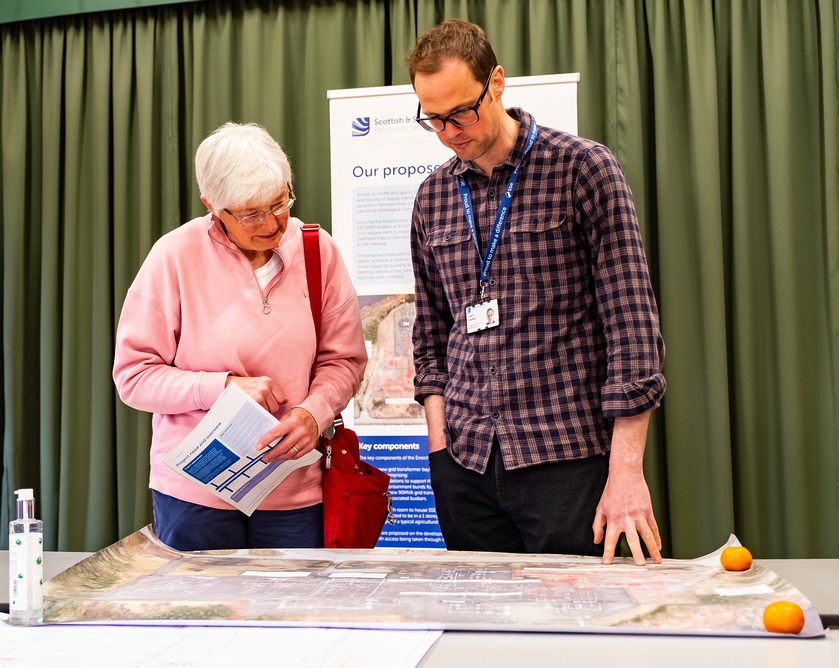
Alignment Consultation Closed
We would like to thank all members of the local community and interested parties who took the time to attend the one of the 16 public events across the project route between 20 May - 20 June 2024.
During the consultation we shared our potential alignment for the overhead line, with alternative alignment options in some locations, presented through maps and visualisations.
The consultation period for this project has now closed and feedback is being reviewed by the project team. A Report on Consultation will be published in due course outlining the feedback received and the next steps.
If you were unable to attend the public event you can download the project materials that were on display here.
-
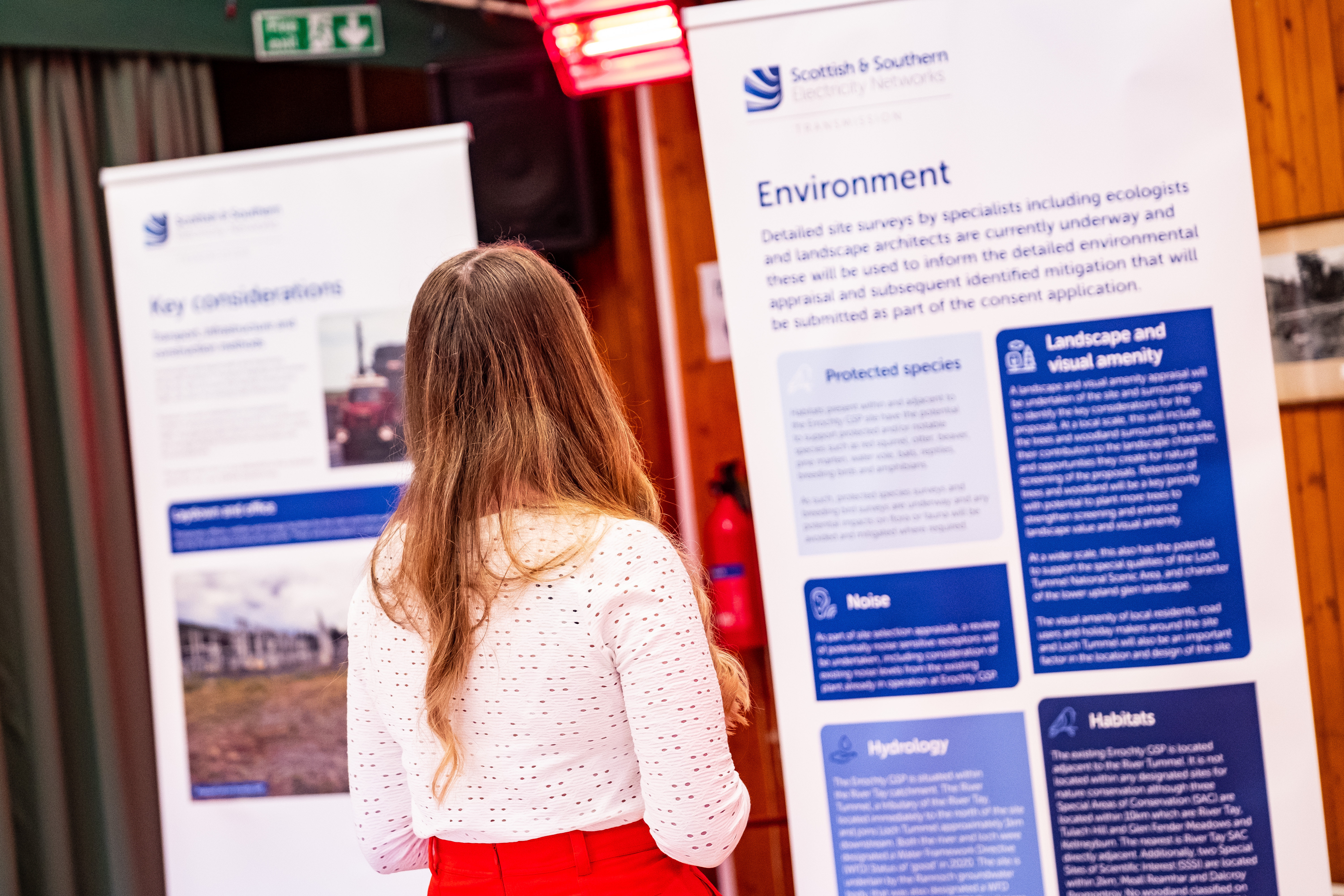
Route Alignment Consultation - May/June 2024 Events
We are pleased to be hosting another series of public consultation events for our proposed Beauly – Blackhillock – New Deer – Peterhead 400kV Overhead Line project, between 20 May and 20 June.
We are hosting a series of face-to-face drop-in events across the project route. We will be sharing our potential alignment for the overhead line, with alternative alignment options in some locations, presented through maps and visualisations.
We invite all interested parties to attend, meet the team, and share your views as we work to identify alignments within these refined routes.Feedback relating to proposals can be made to the project via our feedback form or direct to the Community Liaison Manager via email or letter and our formal feedback period will close on 02 August 2024.
Find out more from our events page -

February and March 2024 Public Engagement Event
March 2024 Public Engagement Event
We would like to thank all local community members and stakeholders who took the time to attend our recent public engagement events which took place from 26 February until 28 March with 16 in-person events covering the project route from Fanellan to Netherton.
Our feedback period remains open until 17 May. We welcome all interested parties to submit their feedback regarding the proposals presented during consultation via;
Online feedback form: BBNP Feedback Form
Email: BBNP@sse.com
Post: FAO Ryan Davidson, SSEN Transmission, 1 Waterloo St, Glasgow, G2 6AY
Copies of the information booklet, maps and figures are available to download via the ‘Project Documents’ section of this project website.
-
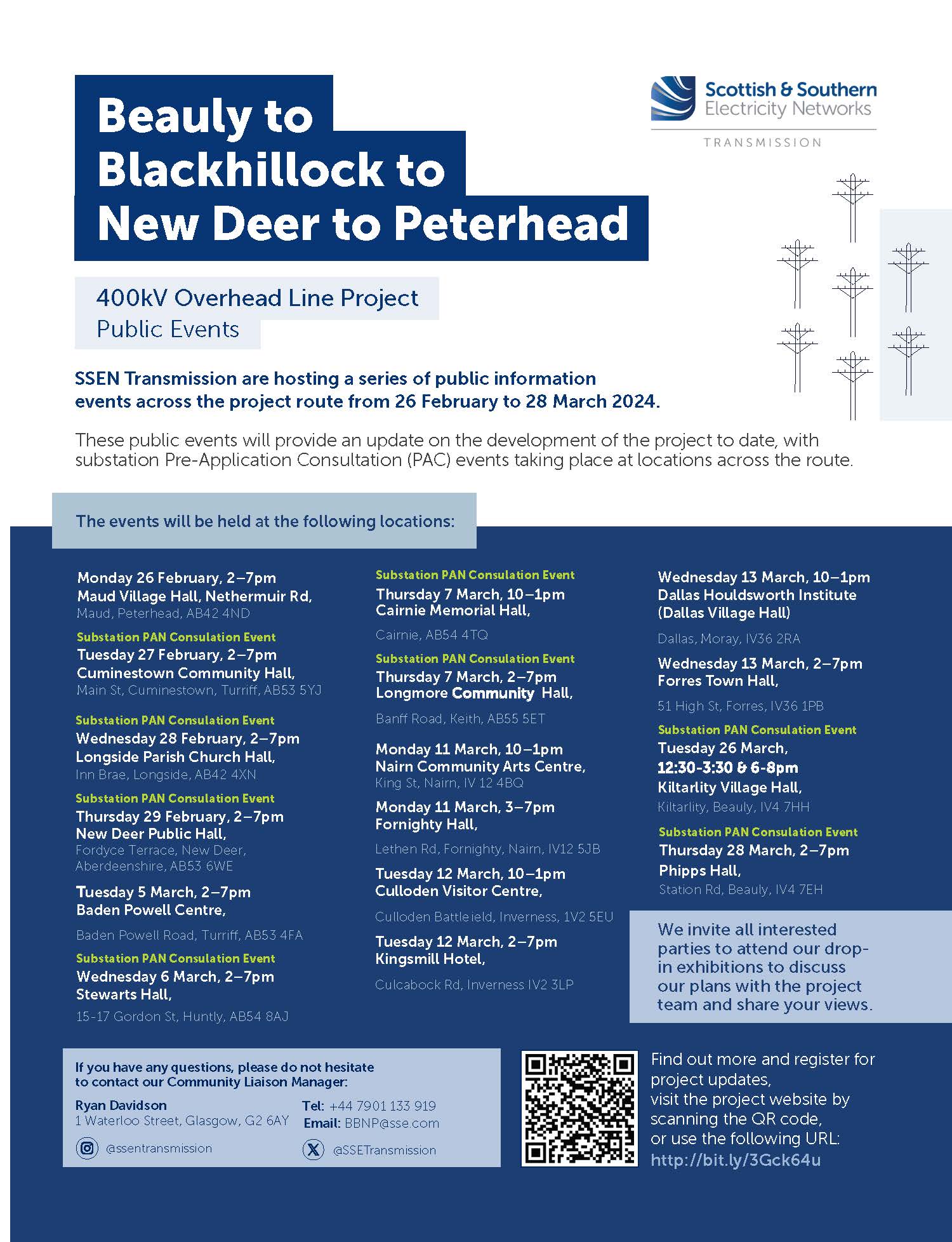
Public Engagement Events
We will be hosting a series of public events across the project route, begining on Monday 26 February and running until Thursay 28 March 2024.
The events will be hosted by the project team and will be an opportunity to see our progress to date, speak with the project team and tell us your thoughts.
Since our last consultation in Spring 2023, we have narrowed down our proposals and there have been some changes to what we called our ‘preferred’ routes that we want to seek your views on.
We invite all interested parties to attend our drop-in exhibitions to discuss our plans with the project team and share your views.
-
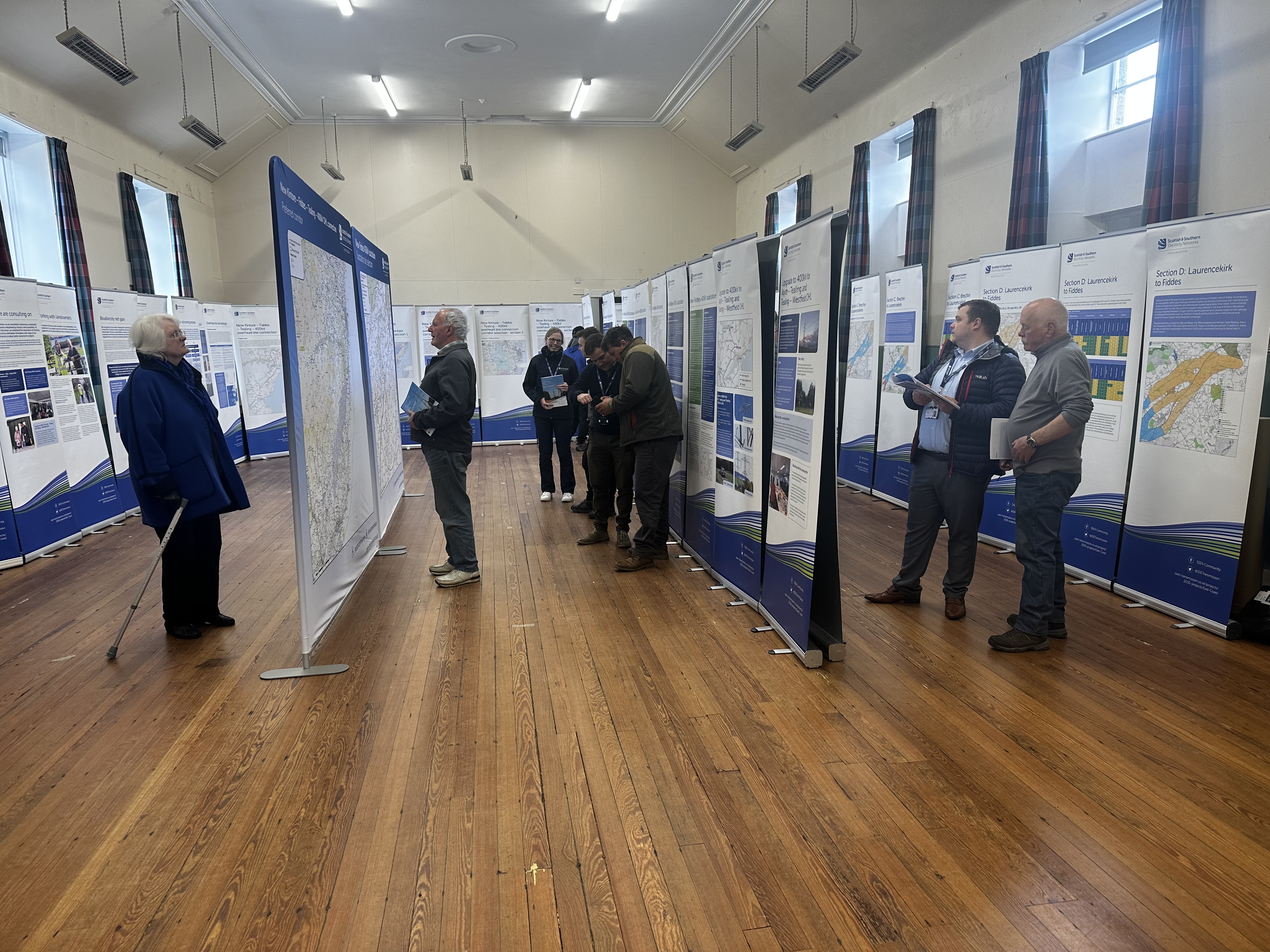
Webinar: Update on ‘Pathway to 2030’ Projects
On the 13 December we held a stakeholder webinar ‘Update on Pathway to 2030 Projects’ to hear about some of the primary changes to our ‘Pathway to 2030’ projects which we’ve been working on since our public consultations earlier this year. Thank you to the 500+ stakeholders who were able to join us.The recording of the event and slide packs are available below for those who were unable to attend.
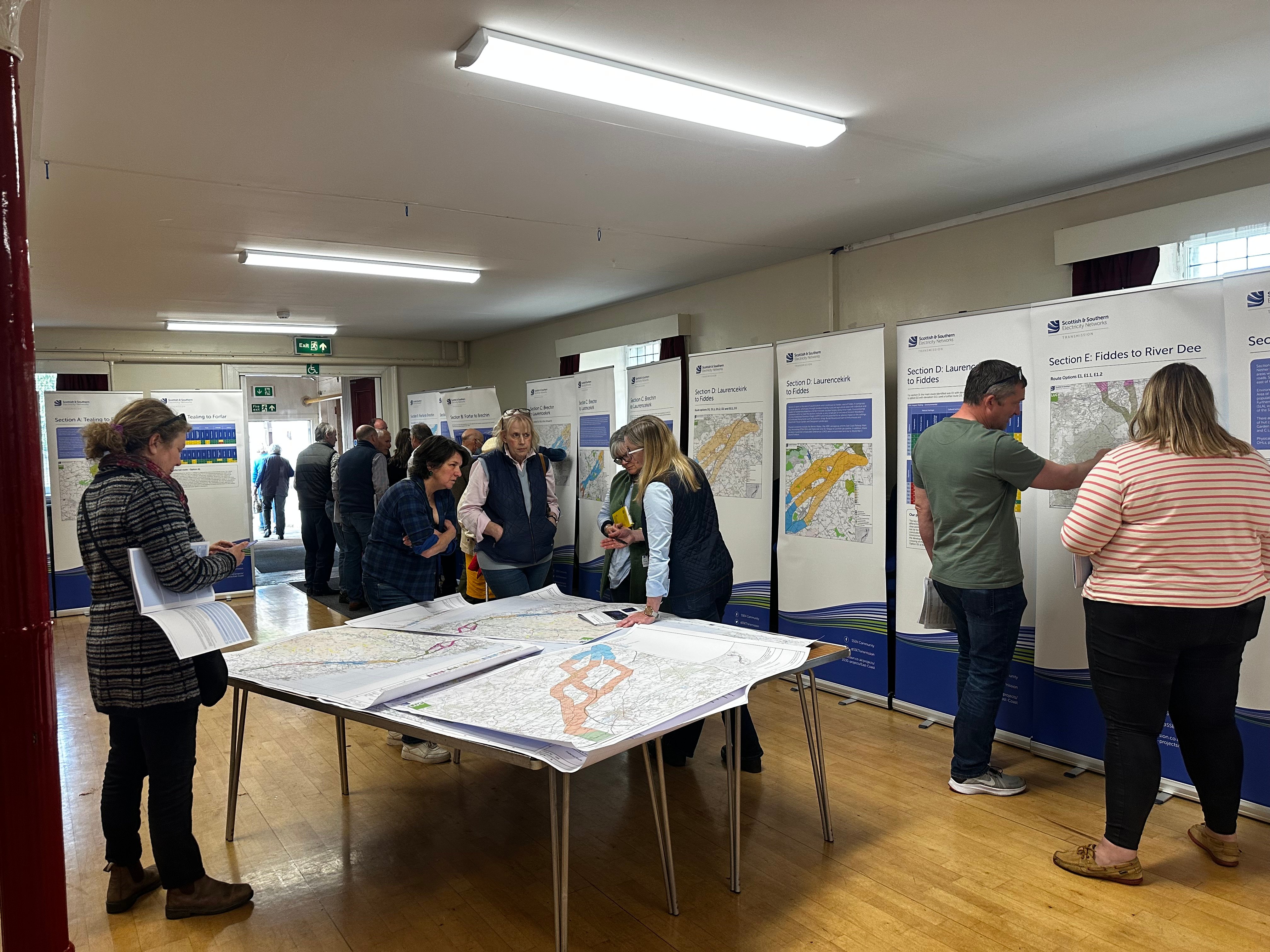
Report on Consultation
Our Reports on Consultation across our three new overhead line projects and associated substation and convertor station developments have now been published. These reports provide a summary of the extensive feedback received during consultation, how this has been considered and confirmation of which routes and substations are now being taken forward to the next stage of development.
Our Reports on Consultation are now available to download from the Project Documentation tab.
Summary Reports on Consultation are also available for each of the three schemes and can be downloaded below:
- Summary Report on Consultation Beauly to Peterhead
- Summary Report on Consultation Spittal to Beauly
- Summary Report on Consultation Kintore to Tealing
A stakeholder webinar available for all to join will be held in the coming weeks to share the changes informed by the feedback. More information about the forthcoming webinar will be shared on our events page shortly.
In further recognition of community feedback, we will seek to rationalise cumulative infrastructure impacts through the removal and undergrounding of existing transmission lines, where technically practical and appropriate, and subject to all necessary planning consents and landowner agreements.
Work to identify and assess potential sections of existing overhead line where their removal will reduce cumulative impacts is ongoing, with an update expected as part of the next round of public consultation on overhead line alignments and more detailed substation designs in early 2024.
We would once again like to thank all stakeholders who took the time to engage with our early consultation process. We will continue to engage with stakeholders ahead of consulting further with local communities and stakeholders in the new year, as we look to refine our proposals.
-
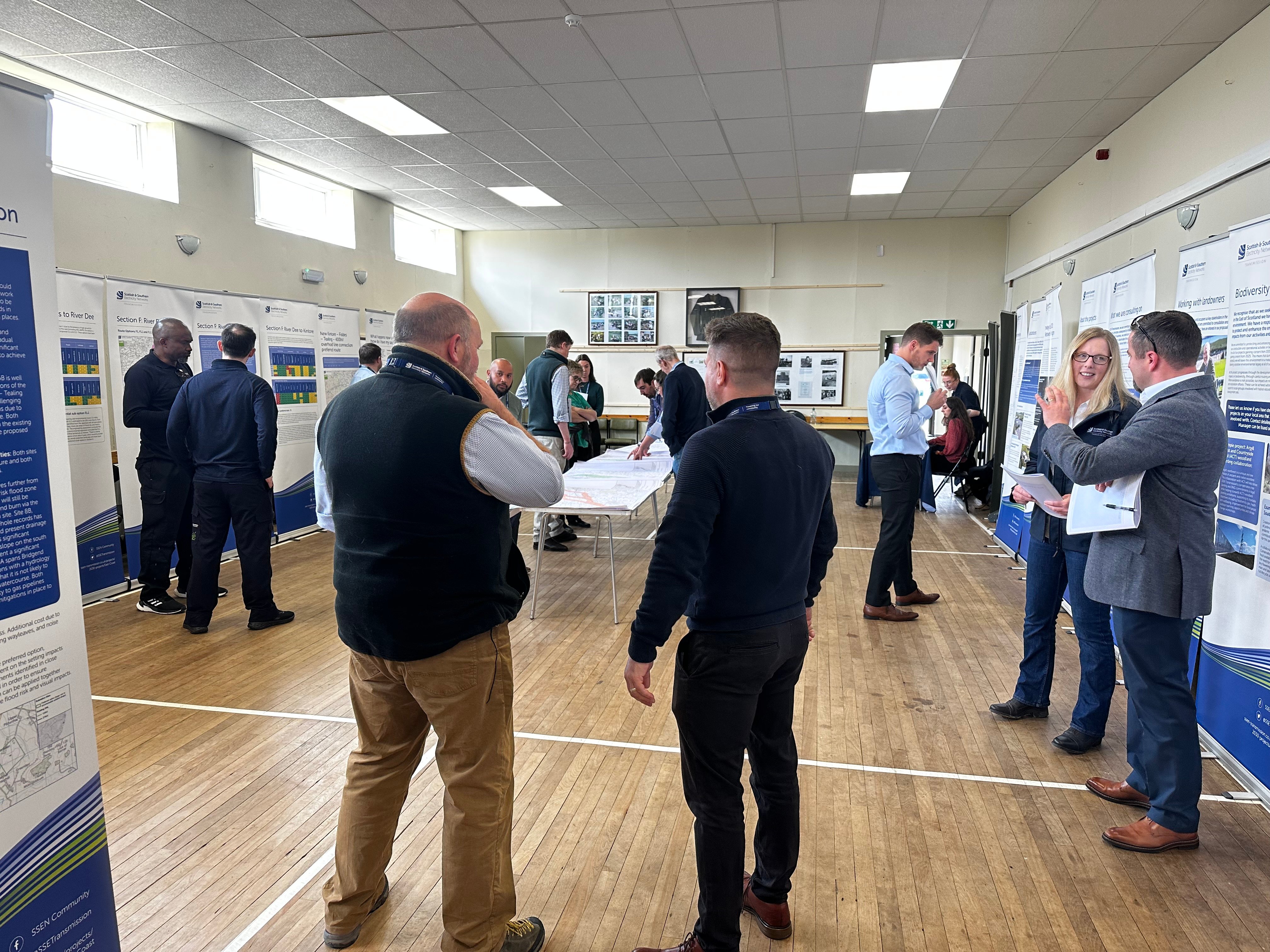
Report on Consultation
Over the course of this year, we have undertaken extensive consultation on plans to upgrade the electricity transmission network across the north of Scotland and have received a considerable amount of feedback from a wide range of stakeholders regarding our proposals.
We recently advised in our next steps for 2030 network developments update that following assessment of consultation feedback and additional options analysis, we would publish our Report on Consultations (RoCs). These reports provide a summary of the feedback received and how it has been considered, which options we will take forward to the next stage of the development process and any changes to options initially consulted on.
It is our intention to publish the RoCs for this project in the coming months. All stakeholders signed up for updates on the project will receive a link to the report and we will also issue Summary Reports to help ensure accessibility.
These Report on Consultations mark the completion of the first round of non-statutory consultation, where we sought feedback on the corridor, route, and substation locations. We will be consulting further with local communities and stakeholders in the new year, as we look to refine the projects, therefore we welcome an open channel of communication and would like to reassure all stakeholders that there will be further opportunities to engage on this project.
Our Reports on Consultation and Summary Reports on Consultation are now available to download from the Project Documentation tab. -
SSEN Transmission sets out next steps for Pathway to 2030 network developments
We have announced our next steps for our Pathway to 2030 programme of projects. We would like to thank everyone who has engaged with our teams and kindly taken the time to respond to our consultations.
Full details of the announcement can be found here:
Next steps for Pathway to 2030 -
Public Consultation April - June 2023
Public consultation feedback period has now closed
Following our public consultation events in April 2023, the consultation feedback period has now closed. The project team will now collate and analyse the feedback before publishing our Report on Consultation.
Although the feedback period for this stage of the project has closed, we still welcome feedback and questions on an ongoing basis. Any feedback that come in outwith the feedback periods is logged and reviewed by the project team.
We will also publish an FAQ document which will provide information and answers to commonly asked questions.
Those that were unable to attend our face-to-face events can view our virtual consultation room below.
Should you have any questions regarding the consultation, or if you were unable to attend the public events and wish to be provided with more information, please contact the project email: BBNP@sse.com
Consultation materials including PDF maps and the Consultation Booklet are in the Project Documents section of this webpage.
-
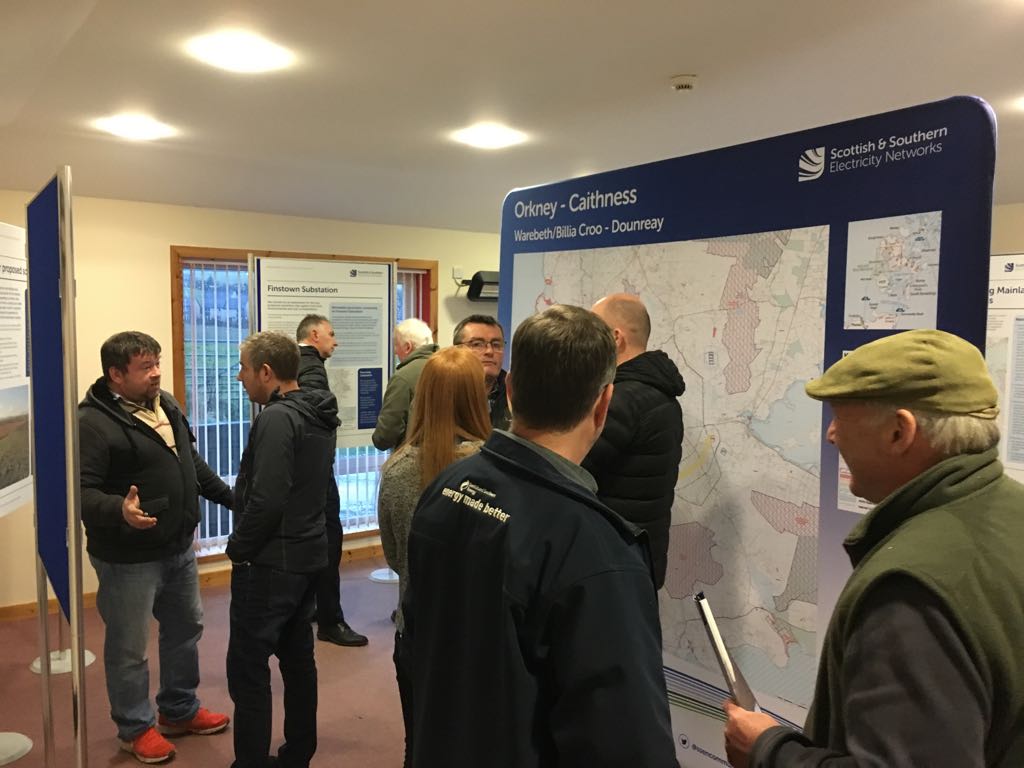
Consultation Period Extended
Due to the extend of interest in our 2030 network development plans across the north of Scotland that are required to meet UK and Scottish Government climate change and energy security targets, we have extended the consultation period for our Beauly-Blackhillock-New Deer-Peterhead project by another week, until Friday 30th June. This follows similar extensions on our Spittal-Loch Buidhe-Beauly 400kV and Kintore-Fiddes-Tealing 400kV projects.
We would encourage anyone with an interest in the Beauly-Blackhillock-New Deer-Peterhead 400kV project to provide their feedback, which will be carefully considered as we continue to develop this project that will be key to help deliver Government net zero and energy independence targets.
-
Survey works to help inform next stages of development
We have recently started localised surveys, assessments and ground investigation works at various locations across the Pathway to 2030 projects which will be used to help gather information to inform the next stage of development for a major electricity transmission network upgrade in the north of Scotland.
Over the coming weeks and months, our project teams and contractors will undertake a series of site-specific assessments which include the likes of ground investigations, bird surveys, LiDAR flights, and ecological and archaeological walkovers and assessments.
Ground investigation works have either recently commenced or are set to begin throughout the Summer for the new 400kV substation and converter stations proposed as part of our Spittal – Loch Buidhe – Beauly 400kV connection, Western Isles connection, Beauly – Blackhillock – New Deer – Peterhead 400kV connection and East Coast 400kV phase 2 projects. Project teams and contractors will undertake a series of site-specific assessments which will help provide vital information and key data for the next phase of project development.
Some of the geo-technical ground investigations may involve drilling boreholes or digging trial pits, which will allow engineers to understand the geographical make-up and suitability of the ground in certain locations to help inform potential design options.
Site assessments and survey works are a key part of the project development process, and the results of these investigations will provide project teams with valuable information to help inform decisions regarding substation site selections and overhead line routes, which will be subject to further consultation later this year.
Initial surveys will prioritise sites and routes which performed the best based on our initial assessment of key environmental and people, technical, and economic factors, and there have been no decisions taken on locations as yet.
There may be more activity on the ground over the summer, and whilst most assessments are expected to cause very little local disruption, we would like to thank the local community for their patience whilst they are carried out. Where more evasive assessments are required such as ground investigation works, we will work to keep local disruption and environmental impacts to a minimum. Please contact your local Community Liaison Manager if you have any questions.
-
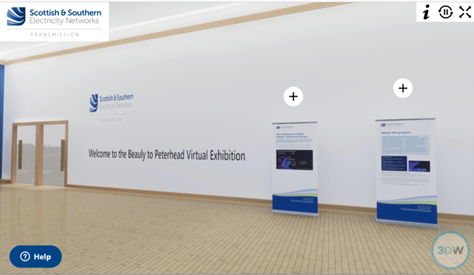
Virtual Consultation Room
Our virtual consultation room is now open. To view this please click here:https://www.3dwtech.co.uk/dashboard/ssen/beauly-to-peterhead/exhibition-en/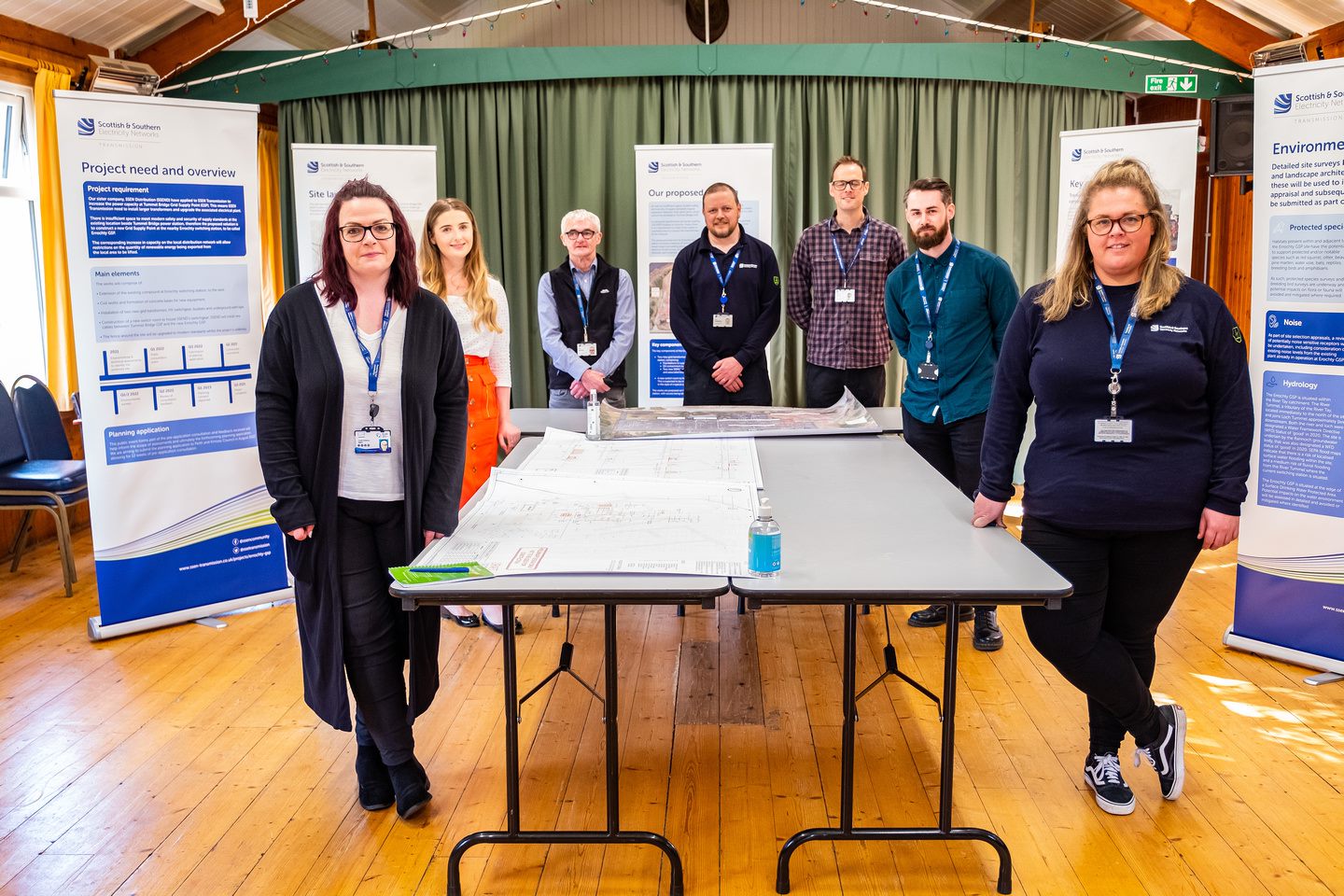
Additional Consultation Event
In response to stakeholder requests we have added an additional drop-in consultation event on the morning of the 26 April.
We'll be at Nairn Community and Arts Centre on Wednesday 26 April between 10am - 12pm and would welcome local community members to drop in and meet the team to discuss our proposals.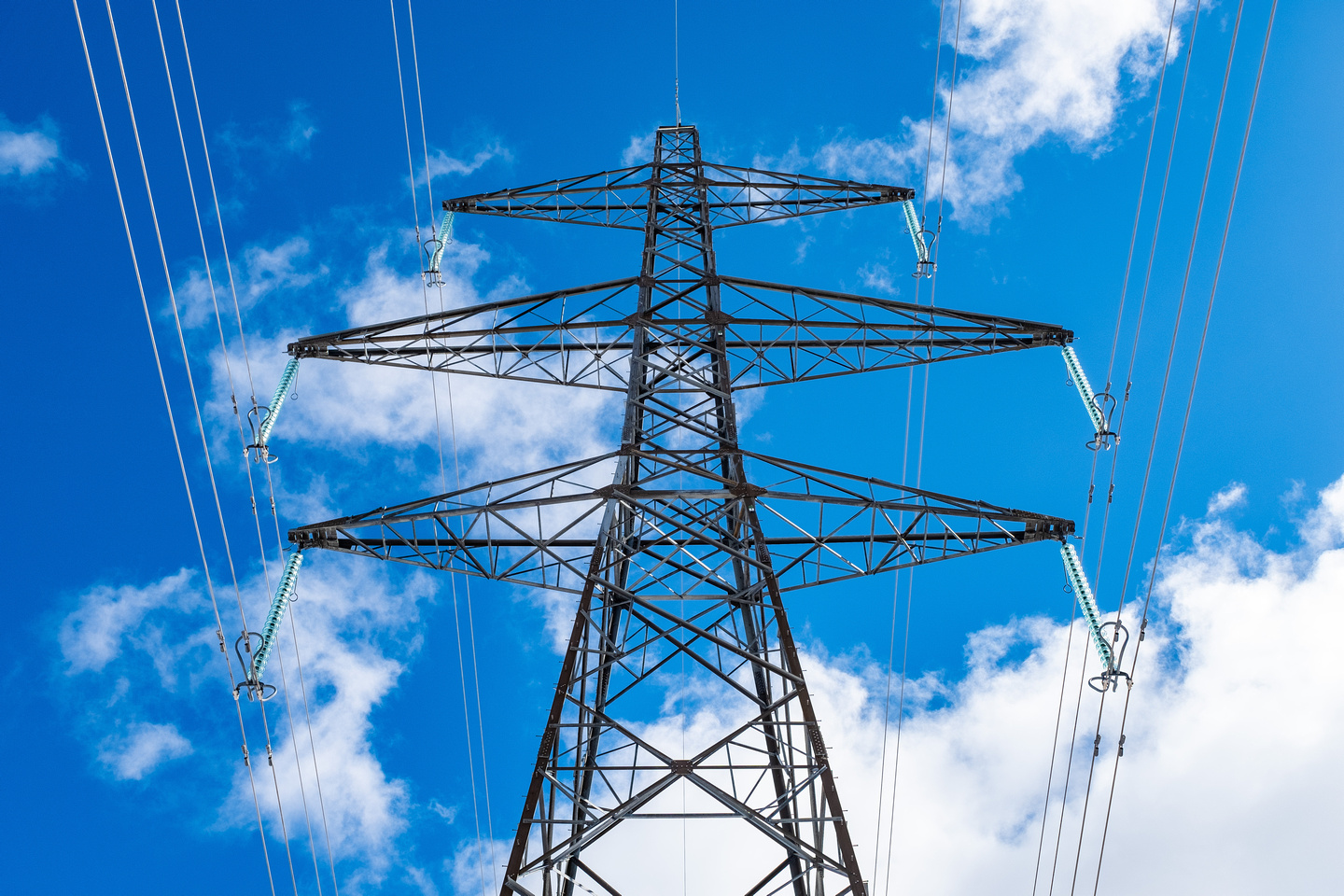
Story Map Available Now
You can now view our interactive Story Map for the upcoming public consultation events by clicking on the link below
https://pinpointgis.wsp.com/portal/apps/storymaps/stories/7ba958a26c6a4da596e080cf3763aa23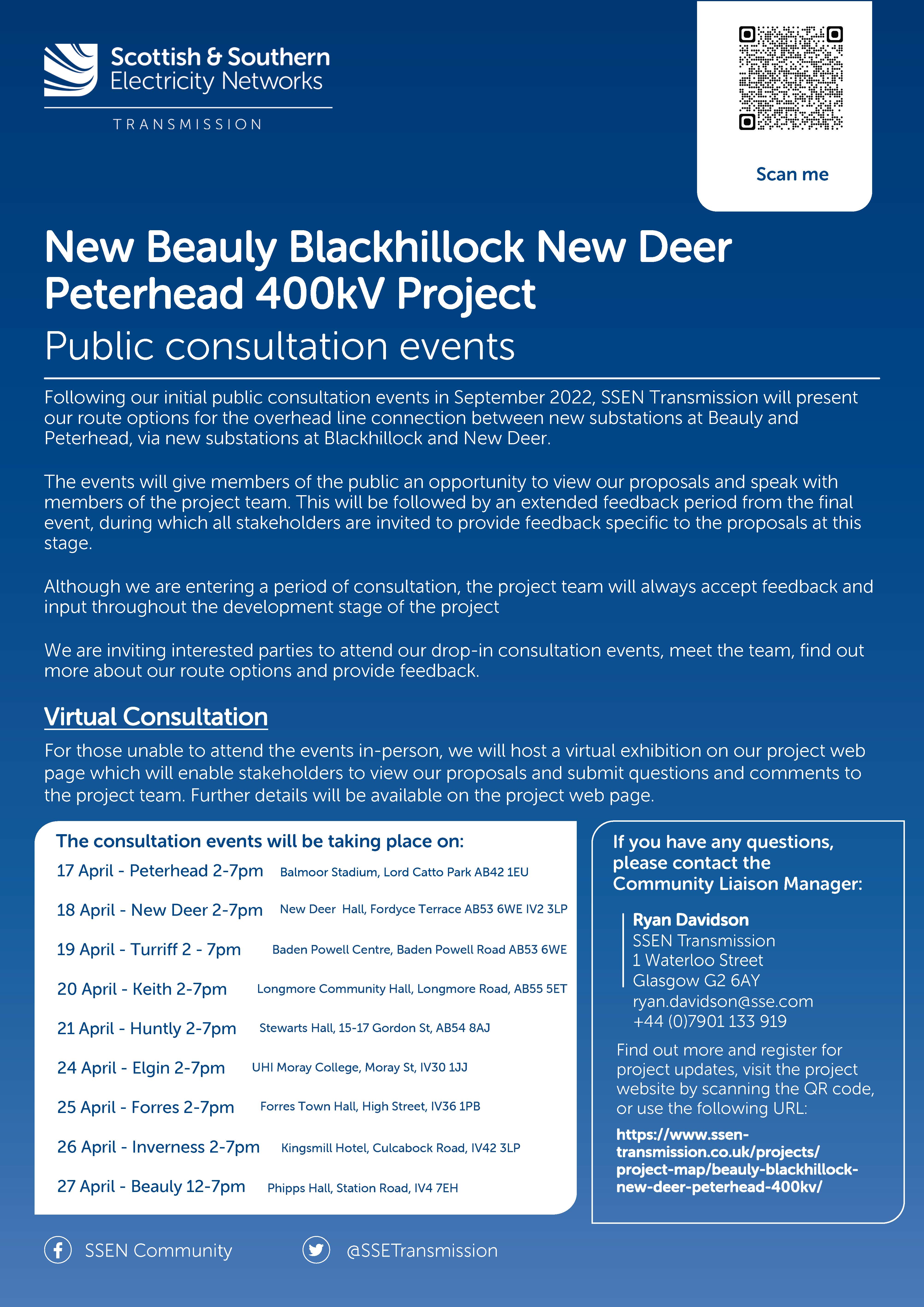
Consultation events
SSEN Transmission will back out to public consultation with our route options for the Beauly Blackhillock New Deer Peterhead 400kV project kicking off on 17 April in Peterhead and finishing in Beauly on 27 April.
We will be seeking feedback on these route options during an extended feedback period, which will close on 09 June 2023.
Out with the consultation feedback period, we will always accept feedback and any concerns or issues raised with regards to the project, our plans or our engagement.
Consultation materials will be available on the project web page under Project Documentation from Friday 14 April 2023. -
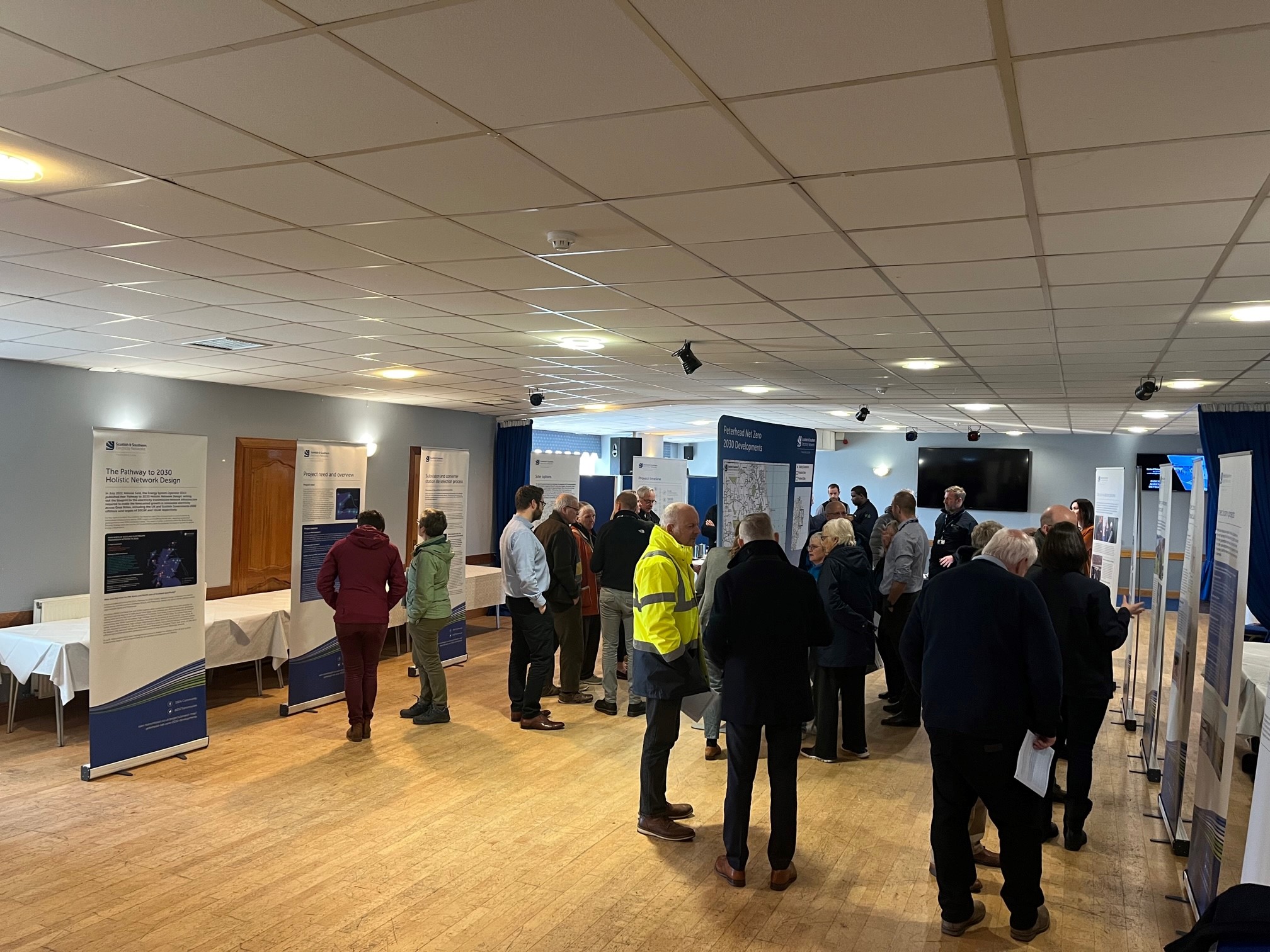
Report on Consultation Published
We have published our Report on Consultation for our events in September/October 2022, which can be found under the 'Project Documents' tab on the left hand side of the project page.
The report includes an FAQ section, which contains responses to questions and concerns raised during the feedback period.
If you have any questions relating to this document, please contact the Community Liaison Manager. -
Feedback forms
Consultation Feedback Form: September EventsPublic Consultation Events - September 2022
We are launching initial public consultation events this month to share our approach to developing this project and the rationale behind our early proposals. We are keen to hear stakeholder views regarding our preferred technology options, your thoughts on our preferred 'corridor' options for the new transmission line and if there are further considerations you believe need to be taken in to account during the next stage of the development process.Drop-in events have been arranged during the following locations and times where we welcome you to come meet our project development team, learn more about the project, ask any questions and share your feedback. -
Country Shows
SSEN Transmission will be attending country shows in the North of Scotland. Our stands will offer an opportunity to speak with staff and find out about projects that are happening in the surrounding areas. We will be in: Turriff: 31 July and 01 August. Black Isle: 03 and 04 August. Keith: 07 and 08 August. Stop by and say hello!
Documents
Proposed Alignment Consultation Materials 2025
-
Proposed Alignment Consultation Booklet February & March 2025.pdf
- Type:
- Date:
- 03 February 2025
- Size:
- 15.6 MB
Our Proposed Alignment Document contains information regarding the background to the project and the engagement undertaken to dates. It describes our approach to the Final Pre-Application Events, what we are seeking comments on and out feedback form. It also contains some high level detail regarding how we select an alignment, our access and additional considerations, and details regarding the overhead line.
-
Proposed Alignment Section maps with Key Considerations (Sections 1-29).pdf
- Type:
- Date:
- 03 February 2025
- Size:
- 62.6 MB
Our constraint maps illustrate our proposed development, alongside key environmental constraints within each of the 29 sections.
-
BBNP-Event-Banners-Feb-2025.pdf
- Type:
- Date:
- 07 February 2025
- Size:
- 36.2 MB
This document provides information to our stakeholders about the project and was provided during our events in February and March 2025.
-
BBNP-Mailer-Jan 2025.pdf
- Type:
- Date:
- 07 February 2025
- Size:
- 162.3 KB
This document provides information to our stakeholders about our consultation events in February and March 2025.
-
BBNP-A4-Poster-Jan 2025.pdf
- Type:
- Date:
- 07 February 2025
- Size:
- 171.1 KB
This document provides information to our stakeholders about our consultation events in February and March 2025.
-
BBNP-Map-Section-Summarys.pdf
- Type:
- Date:
- 07 February 2025
- Size:
- 87.2 MB
These maps provide information to our stakeholders about the proposed development within each section of the project.
-
Overview Proposed Alignment Banner Maps.pdf
- Type:
- Date:
- 19 February 2025
- Size:
- 108 MB
These maps provide information to our stakeholders about the proposed development within each section of the project.
-
BBNP Proposed Tower Heights.pdf
- Type:
- Date:
- 08 April 2025
- Size:
- 420.4 KB
These proposed tower heights correlate with the access track and constraints maps available on our web page.
-
Coachford Alignment Options Consultation Booklet.pdf
- Type:
- Date:
- 09 June 2025
- Size:
- 15.8 MB
This document provides information to our stakeholders about the project and was provided during our consultation in June 2025.
-
Coachford Alignment Options Events Mailer.pdf
- Type:
- Date:
- 09 June 2025
- Size:
- 338.7 KB
This document provides information to our stakeholders about our consultation events in June 2025.
-
Coachford Alignment Options Constraints Map.pdf
- Type:
- Date:
- 09 June 2025
- Size:
- 2.1 MB
These maps provide information to our stakeholders about the environmental constraints present within the project, produced 27 May 2025.
-
Coachford Alignment Options Proposed Alignment Map.pdf
- Type:
- Date:
- 09 June 2025
- Size:
- 21.6 MB
These maps provide information to our stakeholders about the alignment options within the project.
-
Coachford Alignment Options Transposition Towers Map.pdf
- Type:
- Date:
- 09 June 2025
- Size:
- 3.3 MB
These maps provide information to our stakeholders about the proposed tower locations.
-
BBNP Alignment Report on Consultation 2025.pdf
- Type:
- Date:
- 16 January 2025
- Size:
- 187 MB
This Alignment Report on Consultation (and associated appendices/maps) documents the consultation process which has been undertaken for the project at corridor, routeing, alignment or substation site selection stage. It describes the key responses received and provides detail on the actions proposed in response to the issues raised.
-
BBNP Summary Report On Consultation 2025.pdf
- Type:
- Date:
- 16 January 2025
- Size:
- 92.2 MB
This Alignment Summary Report on Consultation (and associated appendices/maps) documents the consultation process which has been undertaken for the project at corridor, routeing, alignment or substation site selection stage. It describes the key responses received and provides detail on the actions proposed in response to the issues raised.
-
Beauly to Peterhead Alignment Deviations Appraisal.pdf
- Type:
- Date:
- 16 January 2025
- Size:
- 1.7 MB
This report documents the appraisal of these alignment deviations from an environmental, engineering and cost perspective in comparison to the Potential Alignment as identified in the Alignment Consultation Document.
-
Potential Alignment and Proposed Alignment Maps.pdf
- Type:
- Date:
- 16 January 2025
- Size:
- 38.8 MB
These maps provide information to our stakeholders about the alignment options within the project, produced 02 January 2025.
-
Proposed Alignment Maps.pdf
- Type:
- Date:
- 16 January 2025
- Size:
- 38.7 MB
These maps provide information to our stakeholders about the alignment options within the project, produced 02 January 2025.
Pathway to 2030 Projects - Additional Information
-
What to expect during the delivery of our projects
- Type:
- Date:
- 19 February 2025
- Size:
- 11 MB
Over the coming months, SSEN Transmission will be submitting a number of planning applications for consent to construct our 'Pathway to 2030' projects. This document is designed to provide information on what communities and stakeholders can expect during the pre-planning consent and delivery phases of our projects.
-
HVDC vs HVAC
- Type:
- Date:
- 11 February 2025
- Size:
- 2 MB
-
Biodiversity Net Gain
- Type:
- Date:
- 11 February 2025
- Size:
- 19.9 MB
We will always look to minimise the potential impacts from our activities and achieve Biodiversity Net Gain (BNG). This document explains our approach and includes some examples of initiatives carried out at our sites.
-
Community Benefits
- Type:
- Date:
- 11 February 2025
- Size:
- 1011.6 KB
Find out more about our Community Benefit Fund via this document.
-
Delivering a Positive Environmental Legacy
- Type:
- Date:
- 11 February 2025
- Size:
- 6.4 MB
This booklet describes our approach to leaving a positive environmental legacy, including our marine biodiversity approach.
-
Delivering Legacy Benefits through Pathway to 2030 Projects
- Type:
- Date:
- 11 February 2025
- Size:
- 15 MB
This document details how this investment programme will ensure a reliable supply of electricity, lead to thousands of jobs across the region, a programme of skills development ensuring a workforce fit for the future and place multi-million-pound contracts with the local supply chain benefitting local communities.
-
Early Careers
- Type:
- Date:
- 11 February 2025
- Size:
- 5.6 MB
To reach net zero by 2050, we’re acting now. And we need bright talent, fresh ideas, and people who want to make a difference to help power the change. This document provides information about our Graduate Programme, Apprentice and Trainee Engineering schemes and Summer Placements.
-
Electric and Magnetic Fields (EMFs)
- Type:
- Date:
- 11 February 2025
- Size:
- 18.5 MB
This document describes how we develop, build and operate our infrastructure to met all health and safety legislation and guidance in respect of EMFs, protecting us all and keeping our network safe for the public.
-
Pathway to 2030 - Tower Crossings
- Type:
- Date:
- 11 February 2025
- Size:
- 5 MB
In this document you can learn more about the composition of our 400kV towers, and the approach we take when our overhead lines must cross existing assets.
-
Planning Applications under the Town and Country Planning (Scotland) Act 1997
- Type:
- Date:
- 11 February 2025
- Size:
- 3.2 MB
The main legislation that governs the consenting of our substation and converter station projects is the Town and Country Planning (Scotland) Act 1997. This document describes the pre-application process including consultation, our environmental assessments and our planning application submission and how this is determined.
-
Protecting Private Water Supplies
- Type:
- Date:
- 11 February 2025
- Size:
- 7.2 MB
Construction works and site investigation have the potential to impact on private water supplies (PWS) and we know that this can be a concern to occupants. This document outlines the activities we undertake to identify and protect PWS.
-
Routeing Overhead Lines
- Type:
- Date:
- 11 February 2025
- Size:
- 3.1 MB
-
The challenges with undergrounding at 400kV.
- Type:
- Date:
- 11 February 2025
- Size:
- 2.9 MB
We are often asked why our new Pathway to 2030 400kV connection projects cannot all be delivered via an underground cable instead of an overhead line. This paper explores some of the technical and engineering, operational, environmental and economic challenges associated with underground cabling which need to be carefully considered.
-
Updated Sustainability Strategy
- Type:
- Date:
- 11 February 2025
- Size:
- 10.6 MB
-
Why the Pathway to 2030 projects require both onshore and offshore solutions
- Type:
- Date:
- 11 February 2025
- Size:
- 2.5 MB
We are regularly asked why our Pathway to 2030 transmission network upgrades cannot all be delivered offshore via subsea links. This document explains some of the many factors that drive the need for both onshore and offshore solutions.
-
Working with landowners and occupiers
- Type:
- Date:
- 11 February 2025
- Size:
- 9 MB
We recognise landowners and occupiers as key stakeholders in the development of our projects. This document details what happens if a voluntary agreement cannot be reached, concerns about impact on properties, following legal frameworks, biosecurity, and irrigation.
-
How Stakeholder Feedback Influences Our Proposals
- Type:
- Date:
- 18 September 2024
- Size:
- 1.1 MB
The document outlines how stakeholder feedback influences our decisions
-
The Section 37 Consent Process
- Type:
- Date:
- 13 May 2024
- Size:
- 1.7 MB
The legislation governing the consenting of overhead line projects in Scotland is the Electricity Act 1989. Applications for consent to construct and operate new overhead lines are made under Section 37 of this Act and are referred to as “Section 37 Consents”. You can find out more about this process in this document.
-
Pathway to 2030 - Why are these projects needed
- Type:
- Date:
- 13 May 2024
- Size:
- 4 MB
We receive a lot of queries about the need for our Pathway to 2030 projects. This document sets out some of the policies and targets driving the need for investment in new clean power and the electricity transmission network that is required to enable this. It also explains the electricity network planning processes that have established the need for these reinforcements.
Turriff & District CC Public Meeting Presentation
-
Turriff & District CC - Public Meeting Presentation July 24.pdf
- Type:
- Date:
- 23 July 2024
- Size:
- 2.2 MB
This is a presentation from our July 2024 Turriff & District CC Public Meeting on the project.
Alignment Consultation Materials - May & June 2024
-
Alignment Maps with Key Considerations (Sections 1-29) - May 24.pdf
- Type:
- Date:
- 16 May 2024
- Size:
- 25.5 MB
This document containing constraints maps for each of our 29 Sections, is designed to be considered alongside our Consultation Booklet and outlines the key environmental, engineering and cost considerations which differentiate between alignment options.
-
Alignment Consultation Document- May 2024
- Type:
- Date:
- 09 May 2024
- Size:
- 1.3 MB
This Consultation Document describes the alignment options appraisal undertaken, the alternatives considered during the selection of alignment options and the identification of the Potential Alignment.
-
Alignment Consultation Booklet May & June 2024
- Type:
- Date:
- 09 May 2024
- Size:
- 11.2 MB
Our Alignment Consultation Document contains information regarding the background to the project and the engagement undertaken to date. It describes our approach to the alignment consultation, what we are seeking feedback on and our feedback form. It also contains some high level detail regarding how we select an alignment, our access strategy, and details regarding the overhead line.
-
Alignment Options Map with Key Environmental Constraints
- Type:
- Date:
- 09 May 2024
- Size:
- 11.7 MB
Our constraint maps Illustrate our potential and alternative alignment options, alongside the key environmental constraints within each Section.
-
Alignment Overview Maps - Sections 1-29- May 24
- Type:
- Date:
- 09 May 2024
- Size:
- 10.9 MB
Our alignment overview maps show a 200m wide Potential Alignment, alongside Alternative Alignment Options (also 200m wide) . They are intended to provide a full project overview of the alignment stage.
Alignment Consultation Document and Figures
-
BBNP Alignment Consultation Document Fig 2.1 - Site Location Plan.pdf
- Type:
- Date:
- 09 May 2024
- Size:
- 370.8 KB
This map provides information to our stakeholders about the proposed site locations, produced 01 May 2024.
-
BBNP Alignment Consultation Document Fig 4.1 - Alignment Options.pdf
- Type:
- Date:
- 09 May 2024
- Size:
- 9.9 MB
These maps provide information to our stakeholders about the alignment options within the project, produced 03 May 2024.
-
BBNP Alignment Consultation Document Fig 5.1 - Ecology, Hydrology & Peat Constraints.pdf
- Type:
- Date:
- 09 May 2024
- Size:
- 13.4 MB
These maps provide information to our stakeholders about the ecology, hydrology & peat constraints present within the project, produced 02 May 2024.
-
BBNP Alignment Consultation Document Fig 5.2 - Cultural Heritage, Landscape and Land Use Designations.pdf
- Type:
- Date:
- 09 May 2024
- Size:
- 14.5 MB
These maps provide information to our stakeholders about the alignment cultural heritage, landscape and land use designations present within the project, produced 03 May 2024.
-
BBNP Alignment Consultation Document Fig 5.3 - Woodland Constraints.pdf
- Type:
- Date:
- 09 May 2024
- Size:
- 14.9 MB
These maps provide information to our stakeholders about the woodland constraints present within the project, produced 002 May 2024.
-
BBNP Alignment Consultation Document Fig 5.4 - Agricultural Constraints.pdf
- Type:
- Date:
- 09 May 2024
- Size:
- 10.2 MB
These maps provide information to our stakeholders about the agricultural constraints present within the project, produced 02 May 2024.
-
BBNP Alignment Consultation Document Fig 6.1 - Potential Alignment.pdf
- Type:
- Date:
- 09 May 2024
- Size:
- 9.7 MB
These maps provide information to our stakeholders about the potential alignment options within the project, produced 07 May 2024.
-
BBNP Alignment Consultation Document.pdf
- Type:
- Date:
- 09 May 2024
- Size:
- 1.3 MB
This Alignment Selection Consultation Document (and associated appendices/maps) explains the project need and summarises the process which has been followed to arrive at the potential alignment. It forms part of the consultation exercise which provides all interested parties with the opportunity to provide feedback.
Refined Routeing Stage - Update Event
-
Events Advert
- Type:
- Date:
- 13 February 2024
- Size:
- 282.9 KB
This document provides information to our stakeholders about our consultation events in February & March 2024.
-
Public Event Booklet Feb/March 2024
- Type:
- Date:
- 13 February 2024
- Size:
- 2.1 MB
This document provides information to our stakeholders about the project and was provided during our consultations in February & March 2024.
-
Refined Route Maps - All Sections 1-11
- Type:
- Date:
- 12 February 2024
- Size:
- 105.7 MB
These maps provide information to our stakeholders about the refined route options within the project covering sections 1-11, produced February 2024.
-
Constraints Maps - All Sections 1-11
- Type:
- Date:
- 12 February 2024
- Size:
- 51.5 MB
These maps provide information to our stakeholders about the environmental constraints present within the project covering sections 1-11, produced 01 February 2024.
Routeing Stage Report on Consultation
-
Report on Consultation - Commuity Council Briefing - Beauly - Peterhead 400kV OHL Project
- Type:
- Date:
- 14 December 2023
- Size:
- 6.8 MB
-
RoC - New Beauly Area 400kV Substation - Figure 2 - Proposed Site.pdf
- Type:
- Date:
- 01 December 2023
- Size:
- 1.6 MB
-
Report on Consultation - New Beauly Area 400kV Substation and HVDC Converter Station.pdf
- Type:
- Date:
- 01 December 2023
- Size:
- 2.3 MB
-
Summary ROC - Beauly to Peterhead.pdf
- Type:
- Date:
- 01 December 2023
- Size:
- 2.8 MB
-
Report on Consultation - Beauly to Blackhillock to New Deer to Peterhead 400kV OHL.pdf
- Type:
- Date:
- 01 December 2023
- Size:
- 3.9 MB
-
RoC - Beauly - Peterhead OHL - Figure 4.10 Proposed Route to be taken to Alignment.pdf
- Type:
- Date:
- 01 December 2023
- Size:
- 5.8 MB
-
RoC - Beauly - Peterhead OHL - Figure 1.1 - Route Options Shared at Consultations.pdf
- Type:
- Date:
- 01 December 2023
- Size:
- 10.6 MB
-
RoC - Beauly - Peterhead OHL - Preferred Route with Amendments.pdf
- Type:
- Date:
- 01 December 2023
- Size:
- 14.1 MB
Routeing Stage Consultation Event Materials
-
Consultation Booklet - April 2023
- Type:
- Date:
- 14 July 2023
- Size:
- 76.6 MB
-
Route Consultation Document - April 2023
- Type:
- Date:
- 15 April 2023
- Size:
- 44.2 MB
-
Section 1 - Constraints Map.pdf
- Type:
- Date:
- 13 April 2023
- Size:
- 2 MB
-
Section 2 - Constraints Map.pdf
- Type:
- Date:
- 13 April 2023
- Size:
- 20 MB
-
Section 3 - Constraints Map.pdf
- Type:
- Date:
- 13 April 2023
- Size:
- 4.6 MB
-
Section 4 - Constraints Map.pdf
- Type:
- Date:
- 13 April 2023
- Size:
- 24.4 MB
-
Section 5 - Constraints Map.pdf
- Type:
- Date:
- 13 April 2023
- Size:
- 3 MB
-
Section 6 - Constraints Map.pdf
- Type:
- Date:
- 13 April 2023
- Size:
- 15.5 MB
-
Section 7 - Constraints Map.pdf
- Type:
- Date:
- 13 April 2023
- Size:
- 8.7 MB
-
Section 8 - Constraints Map.pdf
- Type:
- Date:
- 13 April 2023
- Size:
- 21.2 MB
-
Section 9 - Constraints Map.pdf
- Type:
- Date:
- 13 April 2023
- Size:
- 24.2 MB
-
Section 10 - Constraints Map.pdf
- Type:
- Date:
- 13 April 2023
- Size:
- 3 MB
-
Section 11 - Constraints Map
- Type:
- Date:
- 12 April 2023
- Size:
- 6.6 MB
-
1. Sections 1-3
- Type:
- Date:
- 12 April 2023
- Size:
- 63.3 MB
-
2. Sections 3-5
- Type:
- Date:
- 12 April 2023
- Size:
- 18.4 MB
-
3. Sections 5-8
- Type:
- Date:
- 12 April 2023
- Size:
- 19.9 MB
-
4. Section 7-9
- Type:
- Date:
- 12 April 2023
- Size:
- 25.6 MB
-
5. Sections 9-11
- Type:
- Date:
- 12 April 2023
- Size:
- 17.5 MB
-
6. Section 11
- Type:
- Date:
- 12 April 2023
- Size:
- 15 MB
Corridor Stage Consultation Materials
-
Pathway to 2030 - areas surrounding Beauly - Options as of April 23.pdf
- Type:
- Date:
- 27 April 2023
- Size:
- 6.4 MB
-
 BBNP Poster.jpg
BBNP Poster.jpg- Type:
- Image
- Date:
- 12 April 2023
- Size:
- 1.5 MB
-
Beauly to Peterhead Report on Consultation
- Type:
- Date:
- 27 March 2023
- Size:
- 9.1 MB
-
North of Scotland Webinar March 2022 - Post-Webinar Q&A.pdf
- Type:
- Date:
- 30 October 2022
- Size:
- 306.8 KB
-
Beauly to Peterhead Consultation Document September 2022.pdf
- Type:
- Date:
- 07 October 2022
- Size:
- 510.5 KB
-
Consultation Booklet Sept 2022
- Type:
- Date:
- 07 October 2022
- Size:
- 14.3 MB
-
Consultation Poster Sept 2022
- Type:
- Date:
- 07 October 2022
- Size:
- 3 MB
-
All Beauly to Peterhead Consultation Document Figures.pdf
- Type:
- Date:
- 07 October 2022
- Size:
- 28.1 MB
GI Works
Ground Investigation (GI) Works
Prior to the submission of our Section 37 Application for the proposed Beauly-Blackhillock-New Deer-Peterhead 400kV overhead line project, access to the proposed alignment route will be required to undertake more detailed ground investigations (GI) and inspections of the proposed tower locations. GI works are a necessary step in any new development with the results helping to establish final tower foundation designs, allowing engineers to understand the engineering properties of the soil and rock beneath potential tower locations and their ability to support the structures.
All works are carried out using Permitted Development rights available to SSEN Transmission under Class 40, (1), (c) of the Town and Country Planning (General Permitted Development) (Scotland) Order 1992 as amended. These are necessary survey works, and we will be working closely with relevant departments in the respective Local Authorities (e.g. Road, Planning, Access), Statutory Partners and Landowners.
We will communicate important updates through the ‘Project updates’ section of this webpage (see ‘Project Update’ tab above) where the works details will be available.
Our contractors will work to keep local disturbance to a minimum throughout the duration of these works. For any enquiries, please contact BBNP@sse.com.
More Information
-
- The programme of works commenced in mid-way through 2024 and will continue until early 2026.
- Ground Investigation works will be conducted continuously by multiple subcontractors across the route.
- Landowners have been contacted, and access arrangements have been agreed for this work to progress.
- The schedule and sequencing of ground investigation work may change through findings and seasonal restrictions throughout the 12-18 month period.
- It is anticipated that there will be three working teams on site at any one time, each responsible for conducting their ground investigation works at a single tower.
- It is anticipated that the ground investigation work at each individual tower will take approximately 3-5 days (this may vary depending on findings during the ground investigation works).
-
- Multiple sub-contractors will be carrying out the Ground Investigation works.
- The Ground Investigation machinery will be towed into position by a truck or pick-up before being assembled.
- Occasionally, if access to an area is very difficult, machinery will be transported in parts and assembled on site.
- Appropriate traffic management measures will be put in place (if deemed necessary) and agreed with the relevant authorities prior to doing so.
- A variety of tools will be raised and lowered, either by a cable and winch or a series of steel rods, to drill holes and dig pits to take samples or carry out tests.
- Short bursts of noise may occur as tests are performed or when samples are taken using a hammering action.
- Machinery will typically be in place for a few days, depending on the depth of the sampling and the thickness of the ground. This method is used in both rural and urban locations.
- The work at each proposed tower location requires a minimum of two people, working in an area of around 40 square metres (m2).
- On completion, the ground will be reinstated as agreed with the landowner and/or relevant authorities.
- Boreholes may have instrumentation installed – for example, to monitor water levels.
- Where an installation remains in place, the only thing visible is a small cover, level with the ground, or a small steel barrel to provide protection.
-
Ground Investigation work may be adapted dependent on findings and agreements with Landowners but will typically comprise of:
- Hand excavated inspection pits to a depth of 1.20m in advance of all boreholes.
- 2 boreholes at the centre of the proposed tower location at diagonally opposite legs dependent on type of tower and/or known constrains in the area
- Machine excavated trial pits at the diagonally opposite legs of proposed tower locations (with some towers having a trial pit at the centre of proposed tower location dependent on type of tower and/or known constrains)
- Trial pits at approximately 300-450m along new or upgraded access routes
- Ground Strength tests at each tower structure and along proposed or temporary access routes
- Installation of monitoring wells and ground gas and ground water monitoring.
- Laboratory testing, geotechnical and environmental analysis and reporting.
-
Access routes may be required to allow teams to safely reach the proposed tower locations.
Given the works should only be required over a short period of time, track improvements are only made where necessary. Precondition assessments are done before works begin and subsequent post-condition assessments of the track are carried out to enable any damage or change in the tracks condition to be rectified
Where these access routes require tree cutting, a five-metre-wide access will be established to facilitate access for the drill rig machinery and associated equipment. These tree cutting works are carried out based on minimising impact wherever we can, and where possible tree cutting is avoided by utilising existing tracks, access roads and field/moorland crossings where feasible. At the proposed tower locations, a wider tree-felling clearance of 30m x 30m is made to allow for teams to safely carry out bore-hole drilling effectively.
-
Those contractors undertaking works will in some cases be required to set up welfare compounds for their workers, as required by the Health and Safety at Work Act and Construction Design Management Regulations. The sites will also be used as laydown areas for plant and materials.
These compounds will be set up in line with statutory requirements and we will be working with local communities to mitigate any potential negative local impacts.
FAQs
Who we are
-
SSEN Transmission operates, maintains, and improves the high voltage electricity transmission network in the north of Scotland.
Our network extends over a quarter of the UK’s land mass and some of its most challenging terrain. This area has a lot of renewable energy potential such as wind, solar, hydro and marine power.
We work with the National Grid Electricity Systems Operator so that electricity generated in the Highlands and Islands can reach homes and businesses across Britain.
-
SSEN Transmission is owned 75% by SSE plc and 25% by Ontario Teachers’ Pension Plan.
-
We are closely regulated by the independent energy regulator, Ofgem, for the work we do constructing, operating, and maintaining the transmission network in the north of Scotland.
The costs of constructing, operating, and maintaining the transmission network are shared between all those using the transmission system, including generation developers and electricity consumers.
Ofgem set how much money we invest, what return we make on this investment and how these costs are recovered from users of the electricity transmission system.
About the Pathway to 2030 projects
-
What is Pathway to 2030
The Pathway to 2030 is a series of projects to increase capacity of the transmission network in northern Scotland. It is part of a national effort to upgrade power lines across Great Britain to connect and transport renewable electricity, especially from offshore wind farms.These projects contribute towards meeting climate goals and renewable targets, ensuring energy security and supporting Scottish and UK Government targets for a just transition to a net zero future.
Why is it needed?
- Addressing Climate Change: The UK and Scottish Government have ambitious targets to combat climate change and guarantee a secure and reliable supply of energy. The UK is aiming for 50 gigawatts (GW)* of offshore wind-generated electricity by 2030. Our Pathway to 2030 projects have been identified as required to help achieve such targets by delivering the vital infrastructure required.
*For background, A GW is a unit of measurement of electrical power. It is equal to one billion watts. - Promoting Energy Independence: In 2022, the UK Government set out a strategy to reduce dependence on volatile global gas markets, moving to local, sustainable electricity sources instead. Establishing the necessary infrastructure for this is critical.
- Planning for future need: Experts with the National Grid Electricity System Operator carry out extensive analysis and research to predict the UK’s future energy needs. This information is then carefully considered to guide infrastructure upgrade decisions.
- Approved by Ofgem: Britain's independent energy regulator, Ofgem, granted approval for these projects in December 2022 as part of its strategy for accelerated network upgrades.
More information explaining the need for these projects can be found here, for more information on the Government policies that underpin this need and how the need has been identified and assessed please read our information leaflet.
- Addressing Climate Change: The UK and Scottish Government have ambitious targets to combat climate change and guarantee a secure and reliable supply of energy. The UK is aiming for 50 gigawatts (GW)* of offshore wind-generated electricity by 2030. Our Pathway to 2030 projects have been identified as required to help achieve such targets by delivering the vital infrastructure required.
-
To deliver energy security and net zero, further additional investment in new low carbon electricity generation and the enabling electricity transmission network infrastructure will be required across Great Britian, including the north of Scotland.
In March 2024, the independent National Energy System Operator’s (NESO) published its ‘Beyond 2030’ report, which confirmed the need for several new, replacement and upgraded transmission infrastructure projects in the north of Scotland. In December 2024, Ofgem approved the next phase of regulatory funding to take these projects through the development phase.
These additional investments will soon be subject to extensive public consultation and engagement to help inform their development, with early consultation and engagement expected to take place within 2025. Additional regional investments are also likely to be required to deliver the UK Government's Clean Power 2030 ambition. Further details on these will be communicated once the need and scope for these investments has been established.
More details on what this means for projects in the north of Scotland are included on our website here
-
SSEN Transmission is responsible for where and how the high voltage transmission network operates in the north of Scotland. However, we don't determine where energy is generated – nor where it is needed.
We have a legal obligation to provide electricity generators with access to our network, so that the electricity they generate can be transported across GB to meet the energy demand of homes and businesses.
The north of Scotland is rich in renewable energy, especially wind, water, and marine sources meaning this region is vital for the UK and Scotland's climate goals. Our area covers a quarter of the UK landmass and will be crucial in the move towards a low carbon future.
Our approach to routeing and public consultation
-
Our approach to optioneering (routes for overhead lines or sites for substations) is underpinned by our statutory obligations, as set out in the Electricity Act Schedule 9, to ‘develop and maintain an efficient, coordinated and economical electricity transmission system’. Having regard to the “desirability of preserving the natural beauty, of conserving flora, fauna and geological and physiographical features of special interest and protecting sites, buildings and objects of architectural, historic or archaeological interest; and do what we reasonably can to mitigate any effect which the proposals would have on the natural beauty of the countryside or on any such flora, fauna, features, sites buildings or objects’.
As a result, our optioneering process seeks to balance technical and cost considerations with environmental considerations. To select a proposed option which is economically viable, technically feasible, minimises impacts on important resources or features of the environment and reduces disturbance to those living in it, working in it, visiting it or using it for recreational purposes. The option must also be capable of being granted consent by either the Scottish Government (in the case of overhead line projects) or local planning authorities (in the case of substation projects).
To do this we consider specific topic areas within the environmental, technical and cost categories and assess each in terms of the potential for the option to be constrained. We allocate a Red/Amber/Green (RAG) rating to each topic to highlight where potential issues may be present and use this to help compare the different options. The appraisal seeks to compare the wider implications of each option on those topics (both individually and combined) and reach a reasoned conclusion, on balance across all topics, as to the ‘preferred option’ to take forward.
Any weighting of certain criteria as being of more importance than other criteria would depend on project specific considerations. For example, if a particular technical or environmental constraint has been identified as a priority consideration through stakeholder engagement (or engineering specification) and is unable to be overcome, this will inevitably carry greater weight in the comparison of options which may otherwise contain constraint that can be easily designed out or mitigated.
We follow this comparative approach through stages of refinement. For overhead lines this starts with wider corridors and progress to assessment of routes and alignments. For substations, we start with a long list of sites, which is refined through further assessment to identify one site. Consultation with stakeholders is essential throughout this process so that their views can be taken account of in our considerations prior to progressing to the next stage.
The culmination of this process identifies a ‘proposed option’ that will be taken forward to detailed design, environmental assessment and consent applications.
-
Consultations began at an early stage of project development, long before any decisions on power line routes or substation locations were made.
Tower locations were not shown because this information is not yet known. Early feedback is crucial, so potential route options were discussed with key stakeholders.
Our goal at this initial stage is to select routes approximately 1km wide that minimise physical or environmental obstacles and disturbances, while also being practical and cost-effective. We presented these routes to the public, statutory and non-statutory organisations to explain our current assessment and thoughts and listen to feedback.
Stakeholder feedback guides our projects from the start. All feedback is considered, and where possible and feasible, adjustments can be made, in which case we will ensure any changes are presented at future consultation events.
-
Feedback importance: SSEN Transmission values feedback from stakeholders and local communities and considers it throughout the project development process.
Whilst community feedback is not our only consideration, we wish to develop all projects sensitively and to reduce impacts on communities as much as possible. Community feedback provides an essential insight into local issues that helps to refine the design, routes, and substation locations.
What we can do: Following consideration of all feedback, we consider what opportunities there are to modify our project's design, route, and substation locations.
What we can't do: We don't decide on the overall need for the Pathway to 2030 projects; that's National Energy System Operator and Ofgem's role. Therefore, we can't consult on the core necessity of these 2030 plans.
-
In November 2020, SSE became the first company to produce a Just Transition Strategy, introducing 20 key principles to ensure fairness as we move away from carbon-heavy activities and embrace climate-friendly changes.
The Pathway to 2030 projects align with these principles, promoting job opportunities, local suppliers, and preserving cultural heritage. Early in project development, SSEN Transmission made sure to engage with communities for feedback and insight.
To read more about our principals click here
-
There will be no further consultation prior to the submission of the consent applications for the proposed new 400kV OHL’s. We have undertaken public consultations at the corridor, route and alignment stages of the project development. This includes completing two best practice consultation events as part of the pre-application process for Section 37 applications, please see Electricity Act 1989 - sections 36 and 37: applications guidance - gov.scot.
In March 2025 we concluded the alignment stage consultation for the proposed new 400kV overhead line (OHL) projects, where we presented the Proposed Alignments we will submit as part of a Section 37 applications for consent. The Proposed Alignments have been refined from the various options that we have investigated during the development of the project.
Our alignment proposals presented at these consultations were the result of extensive engagement and project design. We plan to submit our Section 37 applications to the Scottish Government’s Energy Consents Unit (ECU) in Spring 2025. Once an application for consent has been submitted, there will be an opportunity for the public to make formal representations to the ECU before it takes a decision.
For our substation proposals, most consultations concluded in May and June 2024, with applications for full planning permission, under the Town and Country Planning (Scotland) Act 1997, now submitted to the relevant local authorities for consideration. In accordance with the Town and Country Planning (Environmental Impact Assessment) (Scotland) Regulations 2017, applications were accompanied by an Environmental Impact Assessment (EIA) Reports, details of which can be viewed on the relevant project web pages.
Environmental considerations
-
Environmental Impact Assessment Reports (EIARs) for the Pathway to 2030 projects will be prepared for the chosen options, in line with the relevant legislation.
Once completed, the EIARs will be accessible online via our project website, the Scottish Government’s Energy Consents Unit applications portal, and relevant Local Authority planning portals (depending on the consent being applied for).
Hard copies will also be available to view locally and these will be advertised at the time.
-
When developing proposed project alignments, we seek to minimise impacts on woodlands and forestry where possible, however given the numerous environmental and technical constraints, some impacts are unavoidable.
Where the proposed alignment passes through woodland and forestry, an Operational Corridor is identified and trees are removed within the Operational Corridor to ensure the safe operation of the overhead line. Detailed forestry assessments are carried out as part of the Environmental Impact Assessment (EIA) reports that are submitted with Section 37 consent applications to Scottish Ministers, and these assessments are used to inform the Operational Corridor design through woodland.
The Operational Corridor width for a 400kV overhead line will typically be 45m either side of the centre line of the overhead line, but this width may vary depending on the type of woodland/forestry and local topography. In accordance with the Scottish Government’s Control of Woodland Removal Policy, we are committed to providing appropriate compensatory planting for any net loss of woodland.
-
We prioritise environmental protection in our infrastructure projects, strictly adhering to environmental policies and regulations.
We follow a mitigation hierarchy strategy of “avoid, minimise, mitigate and restore” to safeguard local, national and international designated environmentally protected areas.
As the first developer to consult upon and implement an award winning approach to deliver Biodiversity Net Gain (BNG) on all new sites, we’re committed to delivering a “greener grid”, focusing on habitat restoration and creating biodiversity growth as we invest in our network. We are committed to delivering 10% Biodiversity Net Gain on all sites gaining consent going forward. This ensures that we don’t just restore our natural habitats but actively improve them for the benefit of local communities, wildlife, flora and fauna.
During our assessments, comprehensive surveys identify potentially affected wildlife, guiding mitigation efforts. For example, bird surveys are ongoing, with winter surveys planned for 2023/24.
We also assess habitats and other species along our routes. Our consultation process to date has highlighted sensitive areas, and we continue to work with environmental experts and seek community feedback to refine our approach.
-
Scotland has protected areas that represent the very best of our landscapes, plants and animals, rocks, fossils, landforms and cultural heritage. These protected areas are also known as designated sites. The purpose of the designated site is to ensure that the features of special interest, for which the site is designated, remain in good health for all to enjoy, now and in the future.
Designated sites are usually identified by a site boundary and a definition explaining why the site has been designated. Designated sites have different levels of protection, some are protected by international and national legislation or through national and local planning policy. Some sites can have more than one designation e.g. A Site of Special Scientific Interest (SSSI) may also be designated as a Special Protection Area (SPA).
Statutory Authorities such as Nature Scot, Historic Environment Scotland (HES) and Local Authorities can identify and designate a site for its special feature(s).
Examples of designated sites are:
Dalroy and Clava Landforms SSSI - This SSSI is renowned for its “high-level shell beds”. These fossil rich marine clays occur at around 150m above present sea-level and were first recorded in the 1800’s. Clava is also noted as a particularly fine example of “flow tills”. The presence and composition of the till provides a key to understanding the location of glaciers during the last ice age as well as the direction in which they moved. SiteLink - Dalroy and Clava Landforms SSSI
Crathes Castle Garden & Designed Landscape (GDL) - Most famous for its outstanding gardens which were started in the early 17th century and were admired by Gertrude Jekyll in the 1930s. The wider 18th-century designed landscape of parkland and woodland makes an impressive setting for the A-listed castle. CRATHES CASTLE (GDL00119)
-
When planning our overhead line and substation projects, we thoroughly consider environmental, cultural, and built heritage factors in potential locations.
We make use of national archives and data sources as well as gathering data from Local Authorities and detailed site surveys to identify and assess the potential impact on archaeological sites, listed buildings, and other heritage assets.
Environmental Impact Assessment Reports (EIARs) detail these findings and recommend ways to lessen any potential adverse effects. We've received feedback about sensitive archaeological and cultural sites from a range of stakeholders, including local heritage and archaeological groups, all of which our environmental experts have considered.
-
We are committed to ensuring that all our access to land is subject to appropriate levels of biosecurity protocol in line with the relevant industry or Government biosecurity guidance, and to ensure that both practical and reasonable measures are adopted.
All of our contractors have been instructed to implement stringent biosecurity measures on taking access to properties for survey and investigation works and then for construction works, as and when our projects reach this stage, to minimise the risk of contamination and the spread of animal and plant diseases, parasites and non-native species. The guidance we provide contractors reflects a two-stage process.
- Stage 1:
- Clean footwear, vehicles, plant, tools, and temporary access materials to remove soil and debris with brush and water.
- Use facilities provided by landowners for cleaning footwear and machinery.
Stage 2:
- Clean footwear and machinery with suitable disinfectant if land is affected by disease or high risk of contamination.
- Clean between different areas within a property if requested by the landowner
Additional measures include soil sampling and testing for Potato Cyst Nematode and Clubroot where there are potato crops, transporting machinery via low-loader for thorough wash-down between properties and frequent internal team meetings to review and update biosecurity measures.
It is important that landowners take any opportunity to engage with our contractors and land managers on biosecurity concerns and inform them of any known disease on the property to allow for appropriate mitigation measures.
- Stage 1:
-
When planning routes for overhead lines and substations, we consider visual impacts and how this may affect the local scenery, visitor experience and communities.
For each project we develop, we conduct a Landscape and Visual Impact Assessment. This is one element of the Environmental Impact Assessment Reports that forms part of our application to the local authorities and Scottish Government. In this assessment, we consider visual impact from centres of population, popular spots, like walking paths and tourist sites, and where possible reduce any potential negative visual impacts.
-
When developing overhead lines and substations, we focus on having a minimal noise impact. Detailed noise assessments are conducted as part of our Environmental Impact Assessment, and include current noise levels, potential new noise as a result of our infrastructure, and mitigation measures where required, to ensure noise is within acceptable levels.
-
The impact of noise on people is heavily dependent on the nature of the noise, time of day and the noise receptor. As such, there is no single decibel level that can be applied. We engage with the relevant Local Authority’s Town and Country Planning Team to agree practical noise limits to ensure that there is no adverse impact on nearby residential properties.
Specifically, noise impacts for overhead lines are assessed having regard to external and internal noise impacts. The impact of external noise is determined by comparing the noise from the overhead line to the existing background noise levels combined with the noise sensitivity of the receptor. This is a complex assessment but dependent on context. An increase at the noise receptor of 10dB is likely to indicate a significant adverse impact and an increase of 5dB is likely to indicate an adverse impact. Internal noise resulting from external noise is calculated assuming a partially open window, that being in accordance with the guidance in BS 8233 (Guidance on sound insulation and noise reduction for buildings)
Construction noise has been assessed using BS 5228-1 (Code of practice for noise and vibration control on construction and open sites – Noise).
A detailed description of how noise impacts have been assessed is included in our submissions for consent under Section 37 of the Electricity Act 1989 to Scottish Ministers.
-
An aviation impact assessment, including engagement with key stakeholders, has determined there is no identified requirement for flashing lights on top of the towers.
In the UK, the lighting of obstacles is guided by two main documents:
- The Air Navigation Order (ANO) Article 222;
- Civil Aviation Publication (CAP) 168
CAP 168: Licensing of Aerodromes | UK Civil Aviation Authority
-
In our early project development, we consider flood risks and drainage. We aim to avoid areas prone to flooding and conduct assessments when necessary.
Our team includes a variety of water and flooding experts who help design systems to manage water flow around our sites. Before construction, we will have a plan in place to protect both surface and groundwater and reduce potential impacts.
Community and landowner considerations
-
Following the publication of UK Government guidance, every transmission project with new substations or overhead line will provide a community benefit fund. Funding will consist of a strategic fund available to all communities across our network area and local funds for communities close to new infrastructure. If our planned projects go ahead, this funding is worth in excess of £100m to communities over the coming years.
Community Benefit Funds enable us to give back to the communities hosting our transmission network and to help fund projects that can leave a lasting, positive legacy in those areas.
Additionally, our projects will boost the economy, supporting local jobs and businesses. Independent studies show our Pathway to 2030 programme could contribute over £6bn to the UK's economy, support 20,000 jobs across the UK, and benefit Scotland by around £2.5bn, supporting 9,000 jobs.
-
The UK Government has proposed that people living near new transmission infrastructure across Great Britain will get money off their energy bills, as part of its Plan for Change for clean power by 2030.
Under powers in the UK Government’s proposed Planning and Infrastructure Bill, households within 500 metres of new or upgraded electricity transmission infrastructure will get electricity bill discounts of up to £2,500 over 10 years.
Details of how and when the bill discount scheme will be implemented are currently under development by the UK Government but are expected to be in place from 2026. More information can be found here.
You can find further information on the separate SSEN Transmission Community Benefit Fund here:
-
We value engaging with local communities and residents to gather feedback on our plans. While our projects can cause some uncertainty, we aim to be transparent and start these discussions early. We always welcome and encourage suggestions on improving our approach and work collaboratively with communities as our projects evolve.
-
We would like to reassure you that we develop, build and operate our infrastructure to meet all health and safety legislation, and guidance set by relevant bodies - including the UK Government, Scottish Government, the Health and Safety Executive and the industry regulator, Ofgem – including guidance associated with EMF exposure.
In respect of EMFs, we strictly follow the guidance set by the UK Government, which is informed by international guidance.
As well as setting exposure limits that protect against known, established effects of EMFs; the UK Government’s guidance includes precautionary measures to protect against possible effects below the exposure limits.
The UK Health Security Agency and Department of Health have a remit to review new research in this area and ensure that current guidelines and policies are reflective of that research.
There have been over four decades of research looking into whether EMFs associated with electricity transmission projects can cause health effects and there are no established effects below the exposure limits. When we design our overhead lines, substations and cables we do so to ensure they will not exceed those exposure limits, even when operating at 100% capacity, and we also ensure that precautionary measures are also applied to the design where required.
The guidance we follow, which remains subject to ongoing review as required, ensures that safety measures will be applied to our 400kV infrastructure protecting us all against EMF exposure, and keeping our network safe for the public.
More information is available in our EMF Leaflet.
-
We understand that there are concerns about the potential impact of our proposed developments on properties within the vicinity of SSEN Transmission’s proposed overhead line alignments and substations sites.
Throughout the development of projects SSEN Transmission has looked to mitigate impacts on residential properties as far as possible, and these impacts will be assessed as part of the Environmental Impact Assessments that accompany our applications for consent. Extensive surveys have been carried out at identified receptors, including selected residential properties so that we are able to model potential impacts on the wider area.
Concerns in relation to impacts on property are being noted by our team. However, as a regulated business, SSEN Transmission is obliged to follow a statutory legal framework under the Electricity Act 1989 and Land Compensation Act 1961. If you are entitled to compensation under the legal framework we will assess any claim on a case-by-case basis under the direction of this legal framework. If this is the case, we will recommend that you engage a professional adviser and SSEN Transmission will generally meet reasonably incurred professional fees in these circumstances. However, for the avoidance of doubt, we should advise that SSEN Transmission will not meet fees incurred in objecting to our proposed developments.
-
We aim to work cooperatively with stakeholders, including landowners, during the development of the projects.
While we might need to acquire land for substations or rights for overhead lines, our preference is to reach voluntary agreements. Using statutory powers is an absolute last resort.
If we do use them, we'll ensure fair compensation based on established industry standards.
-
A Notice of Intended Entry is a formal notice given to landowners and occupiers, based on the Electricity Act 1989.
It grants us and our contractors the right to enter land after 14 days to conduct surveys related to our project, including environmental assessments, engineering walkovers, and drone surveys.
It's essential to note that these letters are not linked to compulsory land purchase. If there are any concerns, recipients can contact us using the information provided in the letter.
-
We have statutory obligations to maintain a minimum ground clearance between conductors and other objects which are included in Regulation 17 of ESQCR 2002. Further guidance of standard clearances for the industry are set out in Energy Networks Association Technical Specification (ENA) TS 43-8.
The minimum clearance from the nearest line conductor to any object which is ordinarily accessible (including permanently mounted ladders and access platforms) or to any surface of a building is 5.3m. This includes temporary structures such as mobile and construction equipment. We provide guidance and information to third parties who intend to develop land near our electricity transmission assets, this includes overhead lines, pylons, substations, and underground cables. Find out more here.
Cost and engineering considerations
-
The required technology for the new 400kV overhead lines which form part of the Pathway to 2030 have been determined to be a new double circuit 400kV HVAC (High Voltage Alternating Current) overhead line.
The overhead line would consist of steel lattice towers with an average height of approx. 57m which would support six conductor bundles on six cross arms and an earth wire between the peaks for lightning protection. The average distance between towers is expected to be 338m. Tower height and the distance between them will vary dependent on several factors such as altitude, climatic conditions and topography.
This is similar to our Beauly—Denny line, where 80% of its 600-plus towers are below 57m, ranging from 42m to 65m in height.
-
The cost of improving the electricity network is covered by GB electricity consumers. It's to balance this cost with environmental, technical, and societal factors.
In April 2025, the Institution of Engineering and Technology published independent research undertaken to determine the difference in cost between different technology options for electricity transmission infrastructure, comparing the typical cost of overhead lines, underground and subsea cables. The study found that, typically:
- Undergroundcables cost around 4.5x more than comparable overhead lines; and
- Subsea cables cost up to 11x more than comparable overhead lines.
We conduct a Cost Benefit Analysis for our projects, but the cheapest options aren't always chosen. Factors like minimising environmental impact or ensuring technical viability also play an important part in this.
SSEN Transmission's return on investment is determined by Ofgem's regulations, no matter what the technology used.
-
In their assessment of the upgrades required to the GB Transmission Network to meet the UK Government’s 50GW of offshore wind 2030 target, National Electricity Operator assessed a number of potential solutions comprising both onshore and offshore schemes. Their Pathway to 2030 Holistic Network Design (HND), which was assessed and recommended as a single integrated GB wide network plan, concluded that a combination of both onshore and offshore schemes is required to transport the volumes of generation necessary to meet 2030 targets to key centres of demand across the country.
Overhead lines can carry roughly three times more power than subsea cables, making them more efficient and cost effective for energy bill payers.
These onshore reinforcements will also strengthen network reliability and security of supply for homes and businesses across the north of Scotland. -
Where a line exists, it doesn’t necessarily mean that it would be appropriate to build a new one next to it, there are many considerations as to why this may not be possible.
Sometimes, there is no space for new infrastructure due to existing constraints, including proximity to homes. However, in some areas, it is possible to place new lines near the old ones.
These aspects are considered in the optioneering phases of our projects for which we also seek stakeholder views.
-
The environmental, technical, and operational constraints associated with undergrounding at extra high voltages, particularly 400kV, make the option extremely challenging to deliver in many areas of Scotland.
Some of the challenges that contribute to this position:
- Technical Limitations: No underground cables for these high voltages (275kV or 400kV) currently exist in our area. Underground cables need specific ground conditions and present challenges in maintenance and power restoration, especially if faults occur.
- Environmental Impact: Undergrounding can have lasting environmental effects, for example impacts on habitats and hydrology, and the area required for laying cables needs to be clear from significant constructions or vegetation for easy access during construction and repairs.
- Terrain Concerns: The region's terrain often has slopes that are difficult to install and finding a suitable route for underground cables without challenges is extremely difficult.
- Infrastructure Needs: For underground cables longer than 1-2km, additional substation infrastructure would be needed, enlarging the project's footprint.
- Operational needs: Restoring power in the event of a cable fault can take significantly longer than for an overhead line. Faults on overhead electricity lines can typically take a few hours to a few days to repair and are generally easy to locate. Underground cable faults often require extensive works, specialist resource, tools and equipment to locate the fault, followed by significant civils work to expose the damage, replace the damaged section and then it can take up to a month to carry out the repairs. This presents significant risks to security of supply and network reliability. It also impacts on our ability to meet our licence obligations of maintaining an efficient transmission network.
- Cost: Underground cables at 400kV are estimated to be between 5 and 10 times more expensive than overhead lines, and since these costs are reflected in consumer bills, it's a factor that needs to be considered.
Even if technically feasible, undergrounding over a significant length of or the entirety of a project would be unreasonable as it would be contrary to our licence obligations to be economic and efficient in respect of additional costs to the end consumer and also have additional risk to the electricity transmission network in the event of cable failure and consequent outages.
Given these constraints and our responsibility for an economical and efficient transmission network, overhead lines are our main choice for the onshore ASTI projects. Where there is a clear evidence base to justify undergrounding, this will be carefully considered.
- Technical Limitations: No underground cables for these high voltages (275kV or 400kV) currently exist in our area. Underground cables need specific ground conditions and present challenges in maintenance and power restoration, especially if faults occur.
-
The choice between underground cables and overhead lines is based on the technology used and the power requirements:
- Technology Type: The Western Isles connection uses High Voltage Direct Current (HVDC) technology, suitable for connecting the Western Isles' power generation. This HVDC technology has low electrical losses and provides better control over the island's network conditions. It requires only two cables for a 1.8GW rating.
- Power Requirements: The Pathway to 2030 projects, including routes like Spittal-Beauly, requires a 400kV onshore overhead line to transport much more power, 5GW. This setup permits the connection of much more generation. Achieving this rating with HVDC would necessitate at least three subsea cables.
- Feasibility: Using underground cables for such high ratings isn't viable technically, economically, or environmentally due to the sheer number of cables needed.
While underground cables work for the Western Isles connection, they aren't practical for the larger Pathway to 2030 projects.
- Technology Type: The Western Isles connection uses High Voltage Direct Current (HVDC) technology, suitable for connecting the Western Isles' power generation. This HVDC technology has low electrical losses and provides better control over the island's network conditions. It requires only two cables for a 1.8GW rating.
-
While the T-Pylon has been developed for use in England and Wales, it is not currently deemed suitable for our projects in the north of Scotland for several reasons:
- Weather Impact: Our region experiences more severe weather conditions, with increased impact from wind and ice. Using T-Pylons would mean shorter spans between structures, resulting in more structures, thus increasing the visual impact, land occupation, and construction traffic.
- Material Lifespan: The composite material used for T-Pylon's diamond insulators might only last about 20 years. In contrast, the glass insulators on our lattice steel towers have a life expectancy of 40-50 years.
- Transport & Delivery: The T-Pylon's large steel sections need a large number of low-loaders for delivery, significantly affecting local traffic. Their design could also force new lines to be closer to major roads, impacting our ability to route away from properties. Lattice steel towers are more compact for transport, minimising traffic disturbance.
- Design Flexibility: T-Pylons can only turn up to 30° angles, while our lattice steel towers can turn up to 90°. This flexibility helps us avoid communities, viewpoints, and environmentally crucial sites. The limited direction change of T-Pylons would hinder our ability to minimise line impact.
- Reliability & Repair: T-Pylons support an entire circuit on a single diamond so in the unlikely event of a failure the entire circuit could be lost, whereas lattice steel pylons use a double circuit. Repairs would take significantly longer, delaying power restoration.
Given these factors, we've determined that T-Pylons aren't currently suitable for our projects, as they might result in greater community and environmental impact and increased construction traffic.
- Weather Impact: Our region experiences more severe weather conditions, with increased impact from wind and ice. Using T-Pylons would mean shorter spans between structures, resulting in more structures, thus increasing the visual impact, land occupation, and construction traffic.
-
The conductor types being utilised for the new overhead lines proposed between Spittal - Beauly, Beauly – Peterhead and Kintore – Tealing are conventional AAAC (All Aluminium Alloy Conductors). This technology is used extensively on our existing network and has a proven record of safe and reliable operation. A conductor selection exercise was carried out considering electrical performance, EMF (Electric and Magnetic Fields) and noise impacts, mechanical performance, reliability and cost. The key advantages over the other conductors considered was proven reliability, the ability to reduce conductor noise and reduce electrical losses.
-
High tension Low Sag (HTLS) conductors are particularly well suited for re-conductoring projects, where existing transmission lines are upgraded by replacing the current conductors with newer, higher capacity alternatives. These projects do not require new towers or structures, making HLTS conductors a practical option due to their reduced sag under load.
Despite these advantages, HTLS conductors also present several significant limitations. Their unique composition introduces challenges in construction, operation and maintenance. These challenges become more pronounced in areas with undulating or uneven terrain; conditions that are present along large sections of our proposed new 400kv overhead lines. Such topography places additional mechanical stress on the conductors, which HTLS types are less capable of handling compared to conventional conductors.
If these challenges are not carefully managed, they can lead to reduced asset lifespans and an increased risk of unplanned outages. In addition, addressing these issues typically extends installation timelines.
Another important consideration is that HTLS conductors tend to exhibit higher electrical losses than conventional conductors (AAACs) – particularly when operating near capacity. These losses reduce the amount of electricity delivered to end users, with the cost of this inefficiency ultimately reflected in consumer energy bills.
Given these factors, HTLS conductors were not considered appropriate for our proposed Pathway to 2030 new overhead line projects but are being utilised for one of our related re-conductoring projects.
-
Limits of Deviation (LoD) comprise an area which defines the practical limits within which movement of the Overhead Line (OHL) towers, conductors and access tracks can be sited and construction can be undertaken within the terms of the Section 37 planning consent.
A vertical and horizontal LoD is typically applied to OHL projects. The vertical LoD relates to the addition of a further section of a tower. It also applies should the foundation design change or the location of the tower move to a higher elevation. Whilst the structure height won’t change these activities can result in the tower height increasing.
The horizontal LoD is a distance either side of the OHL and access tracks. This is typically 100 – 200 metres for OHLs and 50 metres for access tracks. However, the distance applied on either side can vary and be project specific.
LoDs are required to provide the flexibility needed during construction to adapt to unforeseen circumstances. This helps ensure that the consented project design can still be implemented even if unexpected engineering or environmental challenges arise.
An example of where a LoD may be utilised is where poor ground conditions are identified that may make the planned location of infrastructure impractical or less suitable. In such cases, the infrastructure position, initially shown in the plans, can be adjusted to a new location within the LoD, allowing construction to proceed. Any movement of infrastructure within the LoD must be agreed by the project team and assessed against the Environmental Impact Assessment Report submitted with the Section 37 application, before the change in location can proceed.
-
All project documents, which include maps of the suggested routes for the overhead lines can be found on our project webpages. Contact details of your local Community Liaison Manager are also available.
-
The 3D models used at our consultation events are created by combining several datasets with the project's proposed infrastructure integrated into them. The base model consists of a 5m resolution Digital Terrain Model (DTM), overlaid with high quality 25cm aerial imagery and 1:25,000 scale Ordnance Survey mapping. It also includes detailed road layouts. On top of this, our consultants incorporate building shapes and tree locations using specialised national data.
Terrain
The model uses OS Terrain 5 data from Ordnance Survey to shape the group surface in the model.This dataset is created from high-resolution scans and simplified to a 5-metre resolution for use in 3D modelling. You can find more information about the dataset here.
Aerial Imagery
The model uses 25cm resolution aerial photos, also from Ordnance Survey. These images are collected on a rolling three-year cycle and matched to Terrain 5 data for accuracy. You can find more information about the dataset here.
TreesTree locations come from the National Tree Map, supplied by Bluesky. It shows vegetation over 3 metres tall, classifying it as either conifer or broadleaf, and represents them using typical tree shapes. You can find more information about the dataset here.
Buildings
The model uses Level of Detail 2 building data from Bluesky. This includes accurately shaped pitched and flat roof shapes, based on high-resolution stereo aerial imagery. You can find more information about the dataset here.
All of this information is georeferenced using the British National Grid Projection. This ensures that every part of the model lines up correctly , making it accurate when integrating proposed infrastructure.
The 3D models are based on geospatial data at the time of modeling. While the data is regularly reviewed and updated, the model may not reflect recent changes, such as newly constructed buildings, recently removed structures or vegetation. changes (e.g. felled trees). This model is intended to give a general visual impression and may not capture every detail of the current environment.
Project Contacts
Ryan Davidson | Community Liaison Manager
Kirsty McNamara | Community Liaison Manager
Alistair Nicolson | Senior Land Manager - Beauly to Blackhillock Sections
Telephone: 07741 127786
Address: 10 Henderson Road, Inverness, IV1 1SN
Michael Forrest | Lead Land Manager - Blackhillock to Peterhead Sections
Telephone: 07384 454039
Address: Grampian House, 200 Dunkeld Road, Perth, PH1 3AQ
Recite me
To make use of this function please click on the 3 'A's' button at the bottom left of the website.
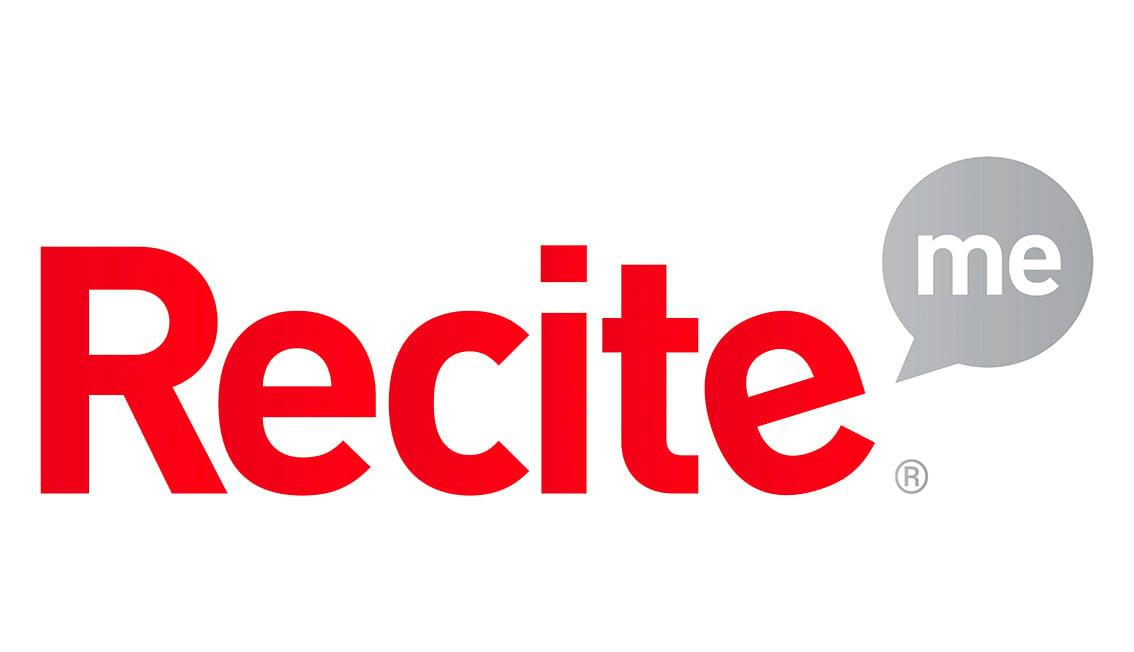
Latest Links
-

Report on Consultation
Our Reports on Consultation across our three new overhead line projects and associated substation and convertor station developments have now been published. These reports provide a summary of the extensive feedback received during consultation, how this has been considered and confirmation of which routes and substations are now being taken forward to the next stage of development.
Our Reports on Consultation are now available to download from the Project Documentation tab.
Summary Reports on Consultation are also available for each of the three schemes and can be downloaded below:
- Summary Report on Consultation Spittal to Beauly
- Summary Report on Consultation Beauly to Peterhead
- Summary Report on Consultation Kintore to Tealing
A stakeholder webinar available for all to join will be held in the coming weeks to share the changes informed by the feedback. More information about the forthcoming webinar will be shared on our events page shortly.
In further recognition of community feedback, we will seek to rationalise cumulative infrastructure impacts through the removal and undergrounding of existing transmission lines, where technically practical and appropriate, and subject to all necessary planning consents and landowner agreements.
Work to identify and assess potential sections of existing overhead line where their removal will reduce cumulative impacts is ongoing, with an update expected as part of the next round of public consultation on overhead line alignments and more detailed substation designs in early 2024.
We would once again like to thank all stakeholders who took the time to engage with our early consultation process. We will continue to engage with stakeholders ahead of consulting further with local communities and stakeholders in the new year, as we look to refine our proposals.
-

Report on Consultation
Over the course of this year, we have undertaken extensive consultation on plans to upgrade the electricity transmission network across the north of Scotland and have received a considerable amount of feedback from a wide range of stakeholders regarding our proposals.
We recently advised in our next steps for 2030 network developments update that following assessment of consultation feedback and additional options analysis, we would publish our Report on Consultations (RoCs). These reports provide a summary of the feedback received and how it has been considered, which options we will take forward to the next stage of the development process and any changes to options initially consulted on.
It is our intention to publish the RoCs during the week commencing 27 November. All stakeholders signed up for updates on the project will receive a link to the report and we will also issue Summary Reports to help ensure accessibility.
These Report on Consultations mark the completion of the first round of non-statutory consultation, where we sought feedback on the corridor, route, and substation locations. We will be consulting further with local communities and stakeholders in the new year, as we look to refine the projects, therefore we welcome an open channel of communication and would like to reassure all stakeholders that there will be further opportunities to engage on this project.
Our Reports on Consultation and Summary Reports on Consultation are now available to download from the Project Documentation tab. -
SSEN Transmission sets out next steps for Pathway to 2030 network developments
We have announced our next steps for our Pathway to 2030 programme of projects. We would like to thank everyone who has engaged with our teams and kindly taken the time to respond to our consultations.
Full details of the announcement can be found here:
Next steps for Pathway to 2030